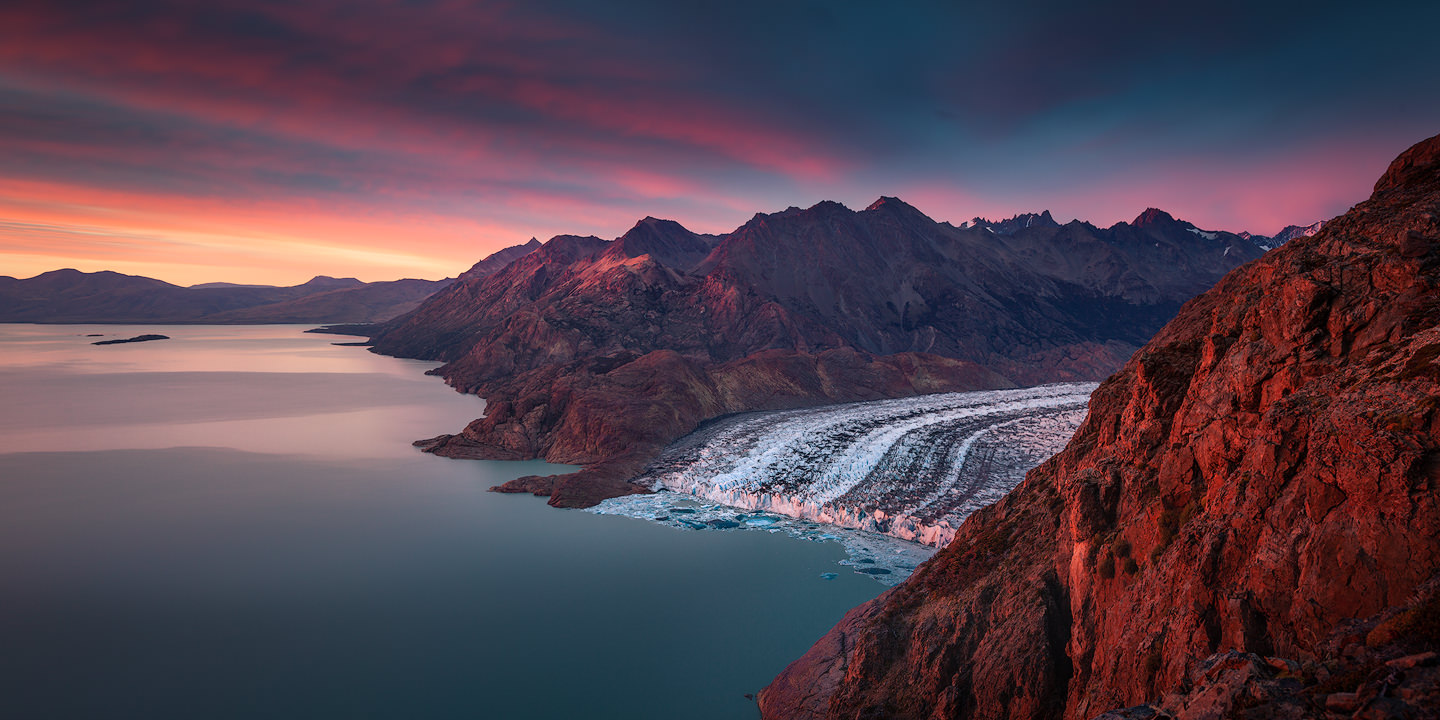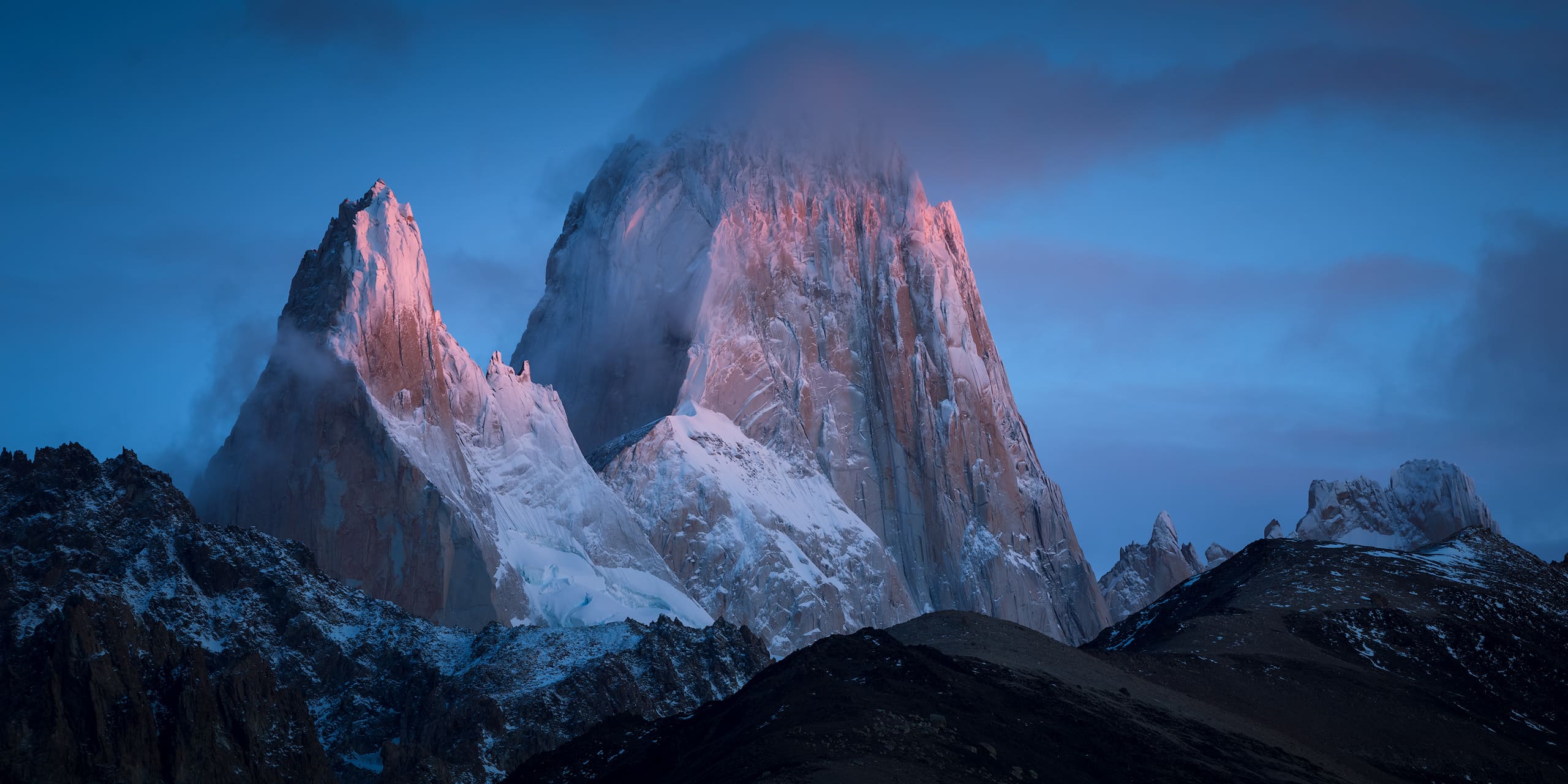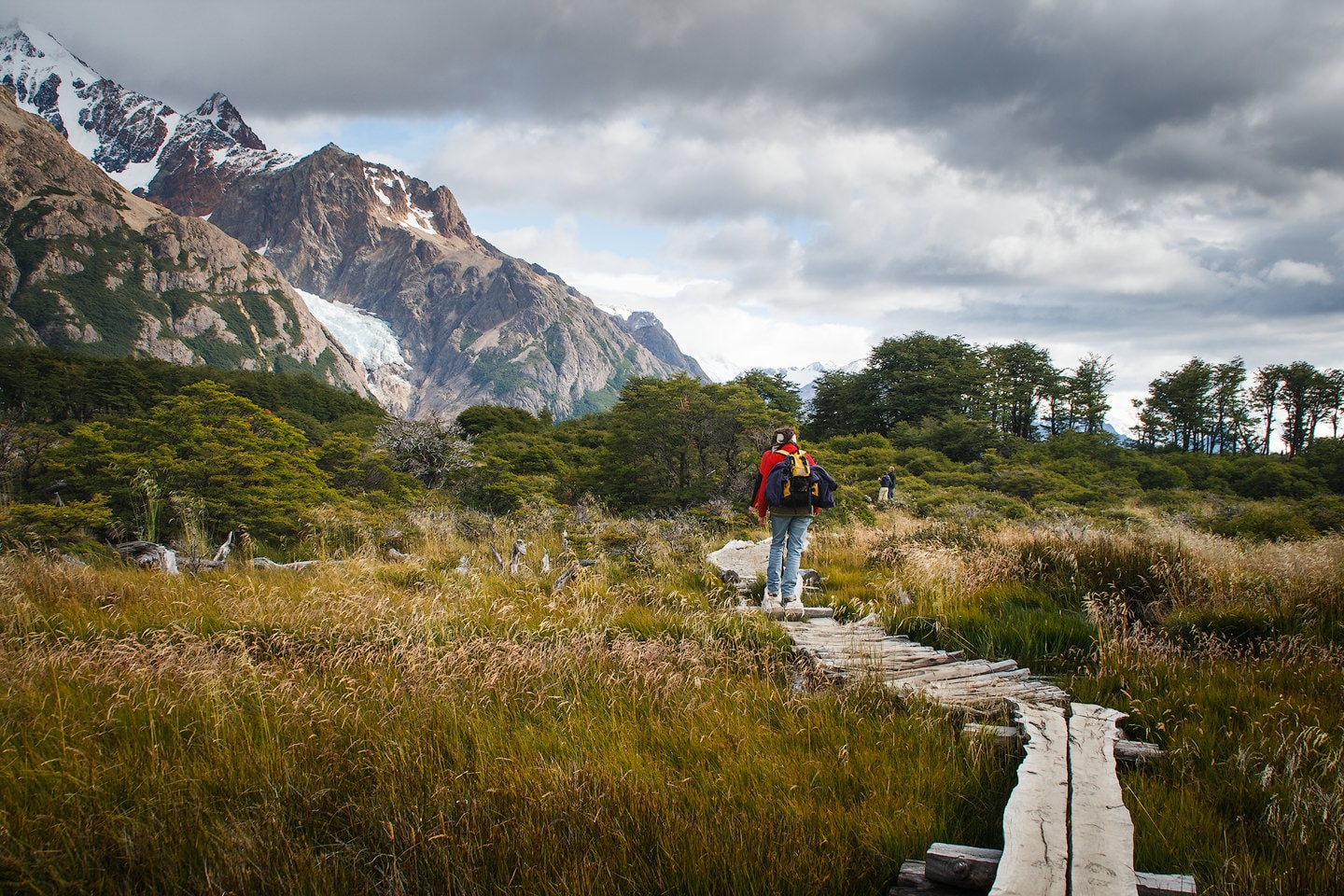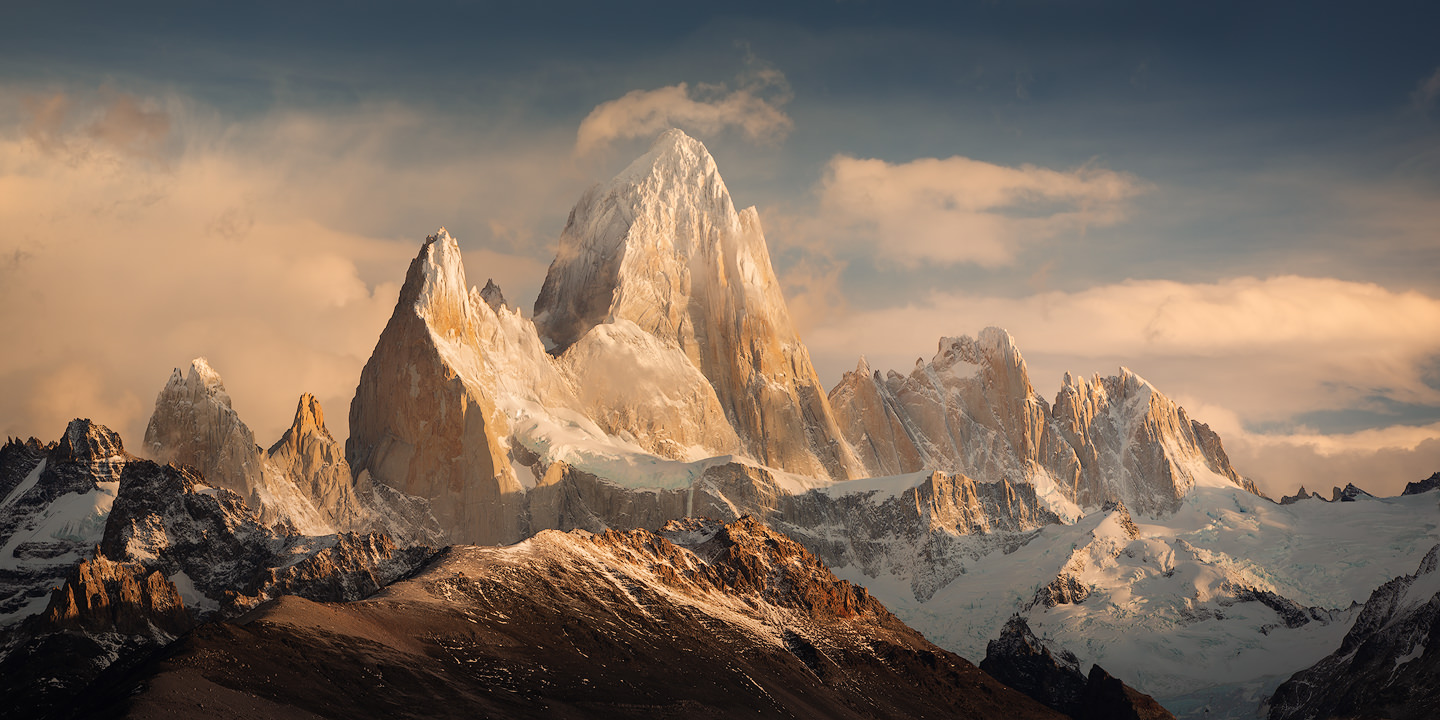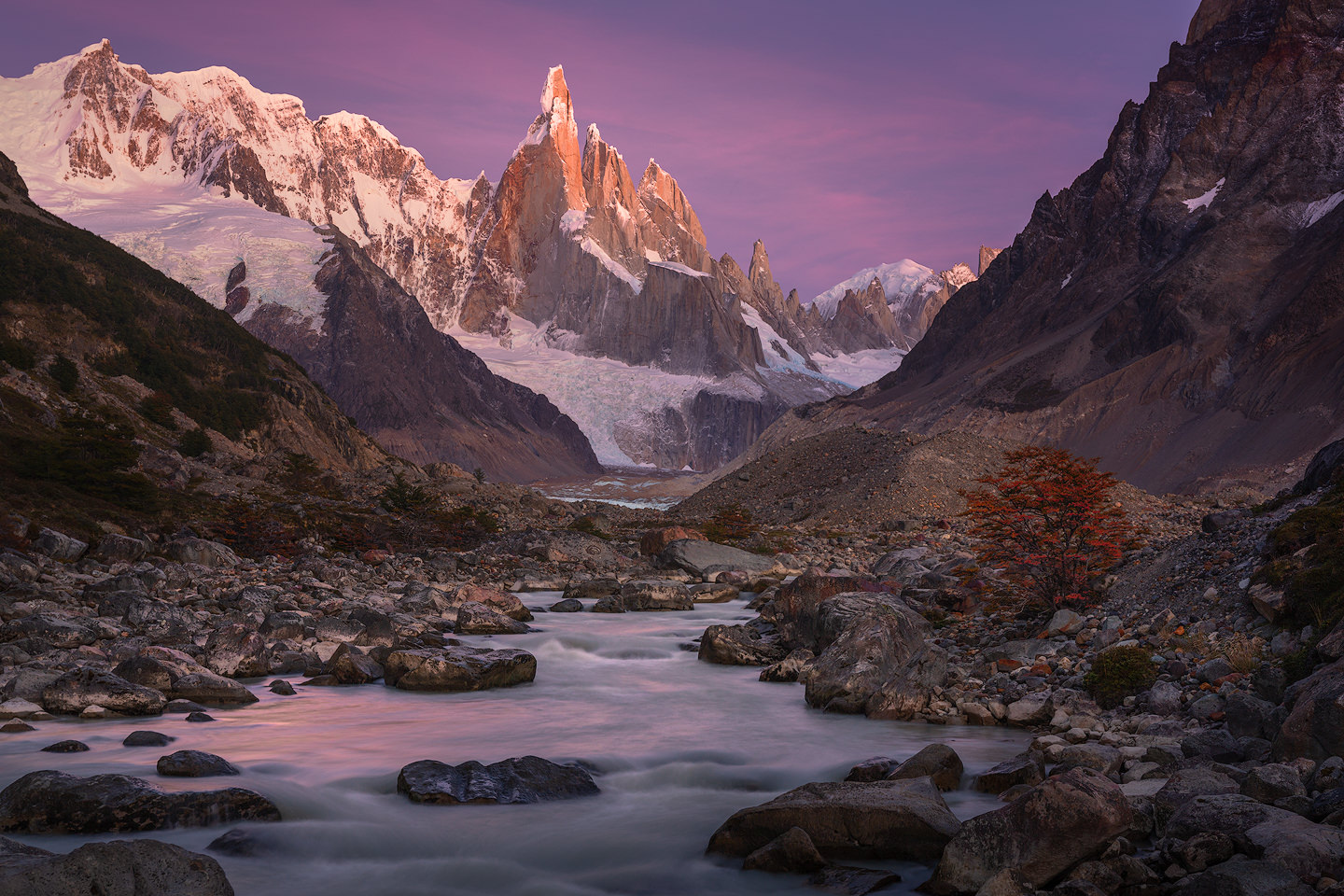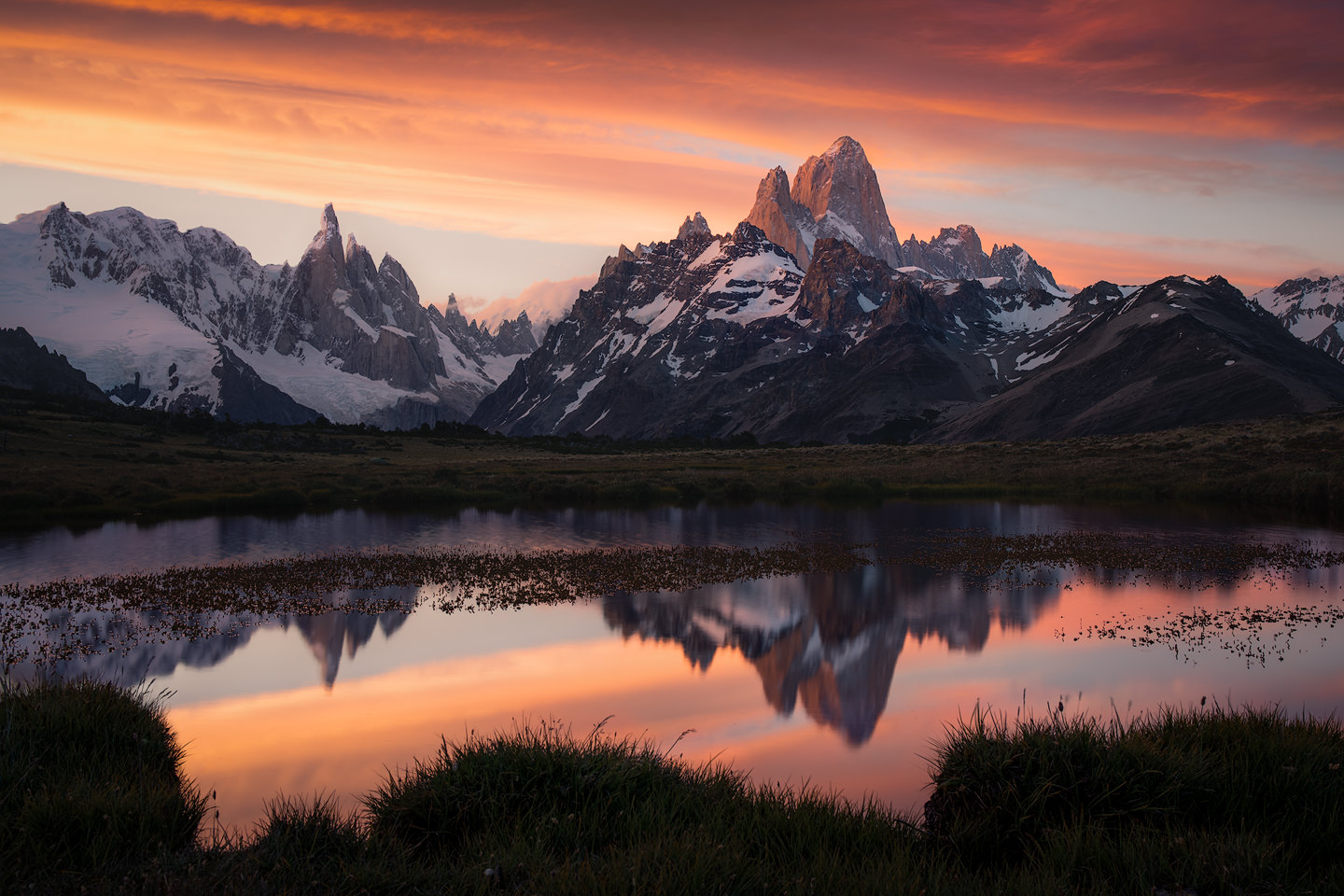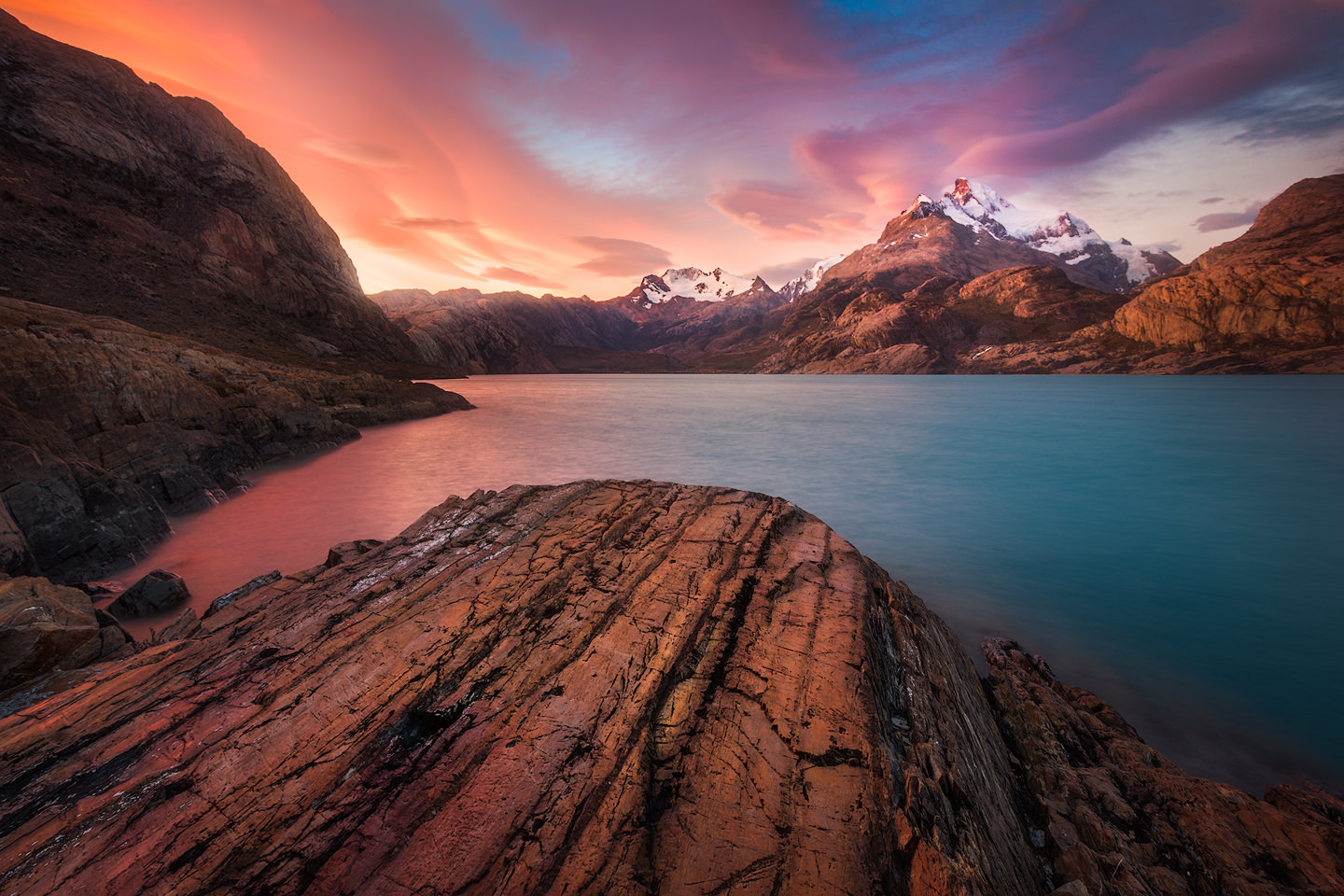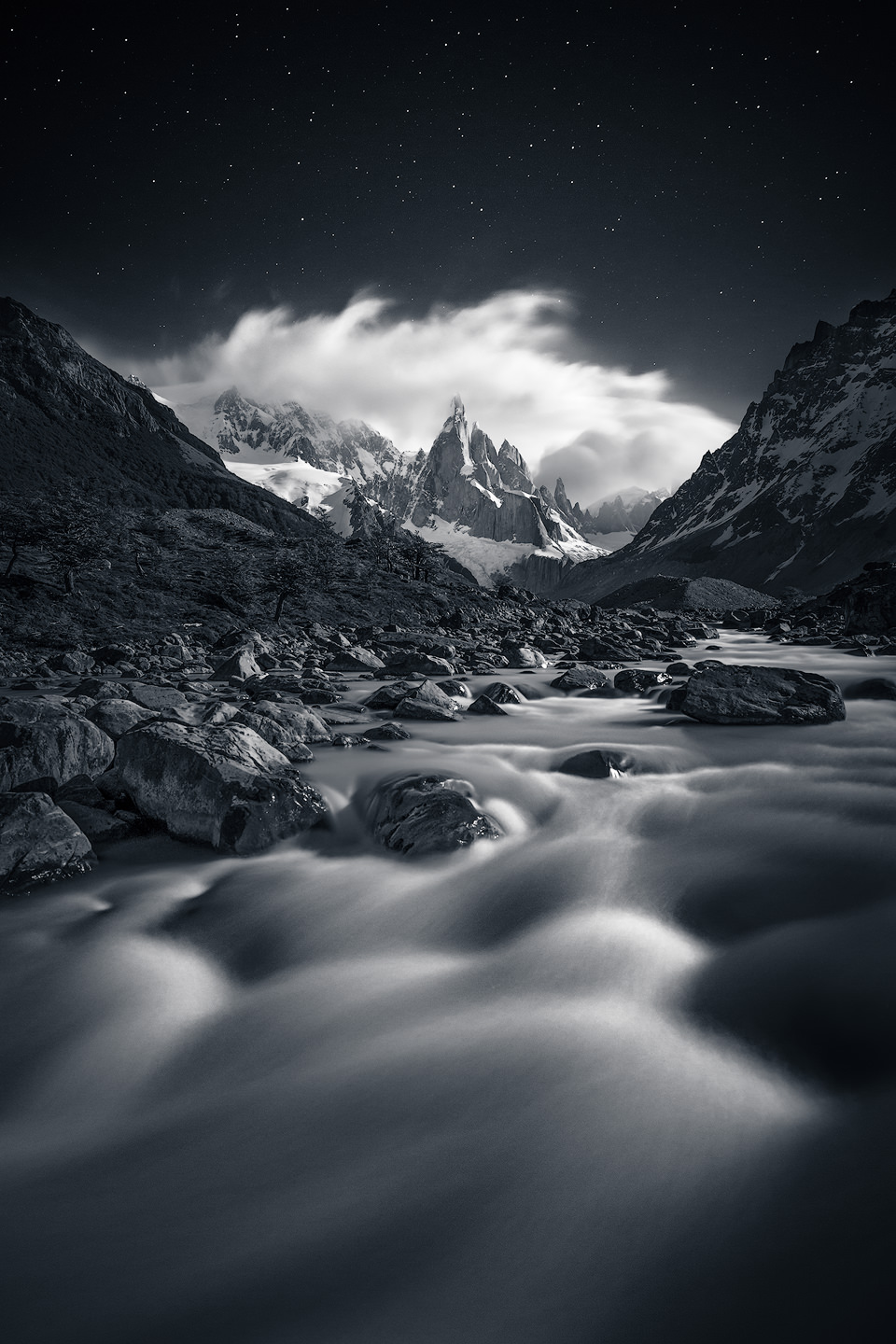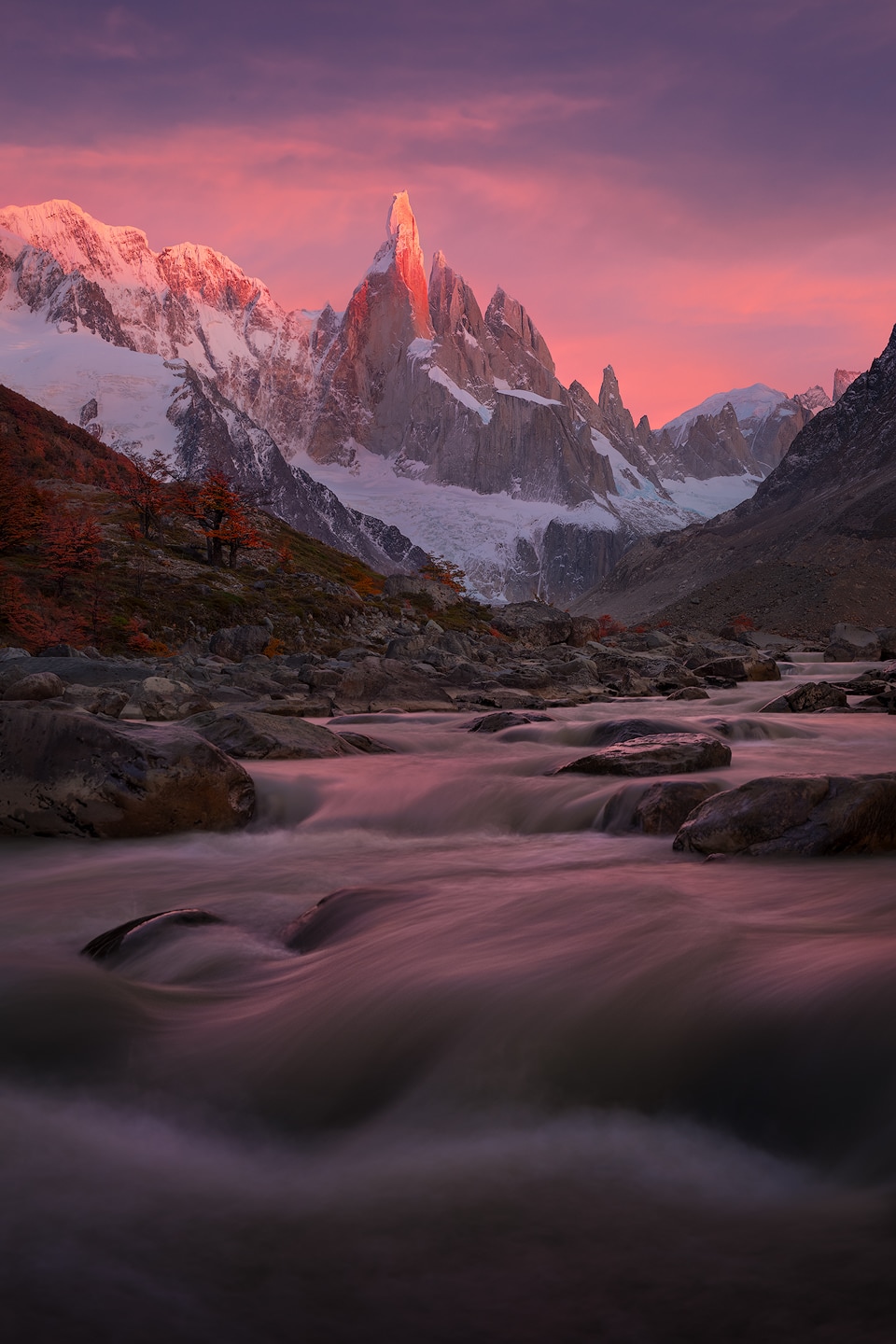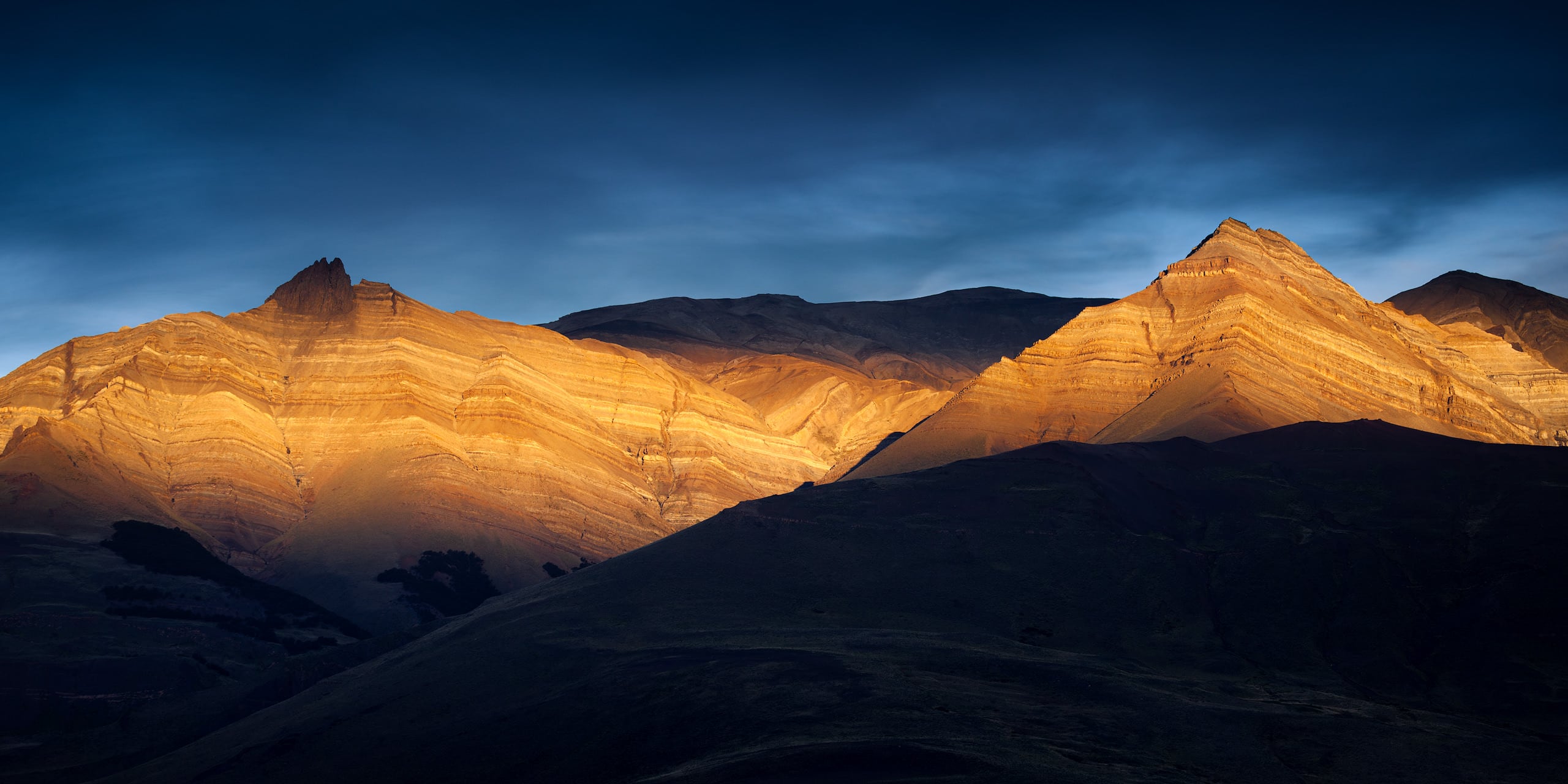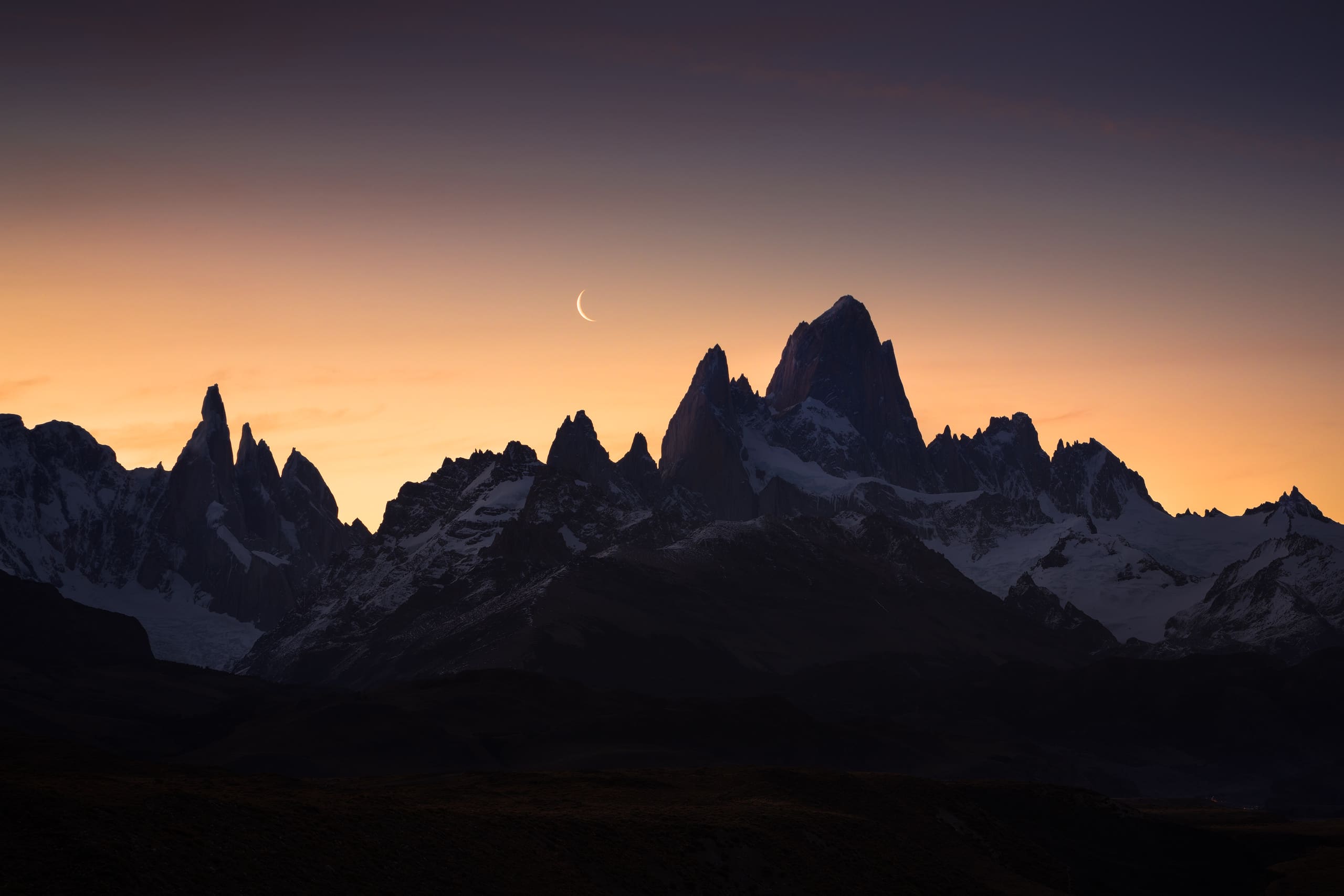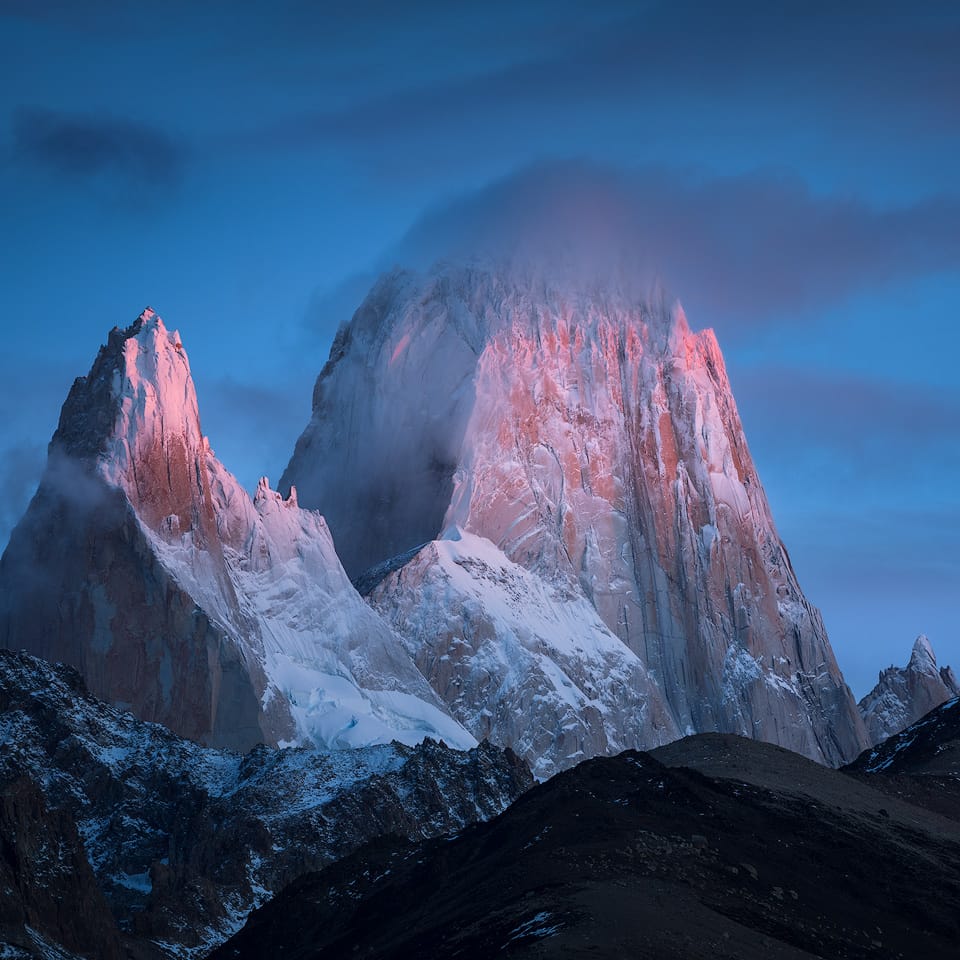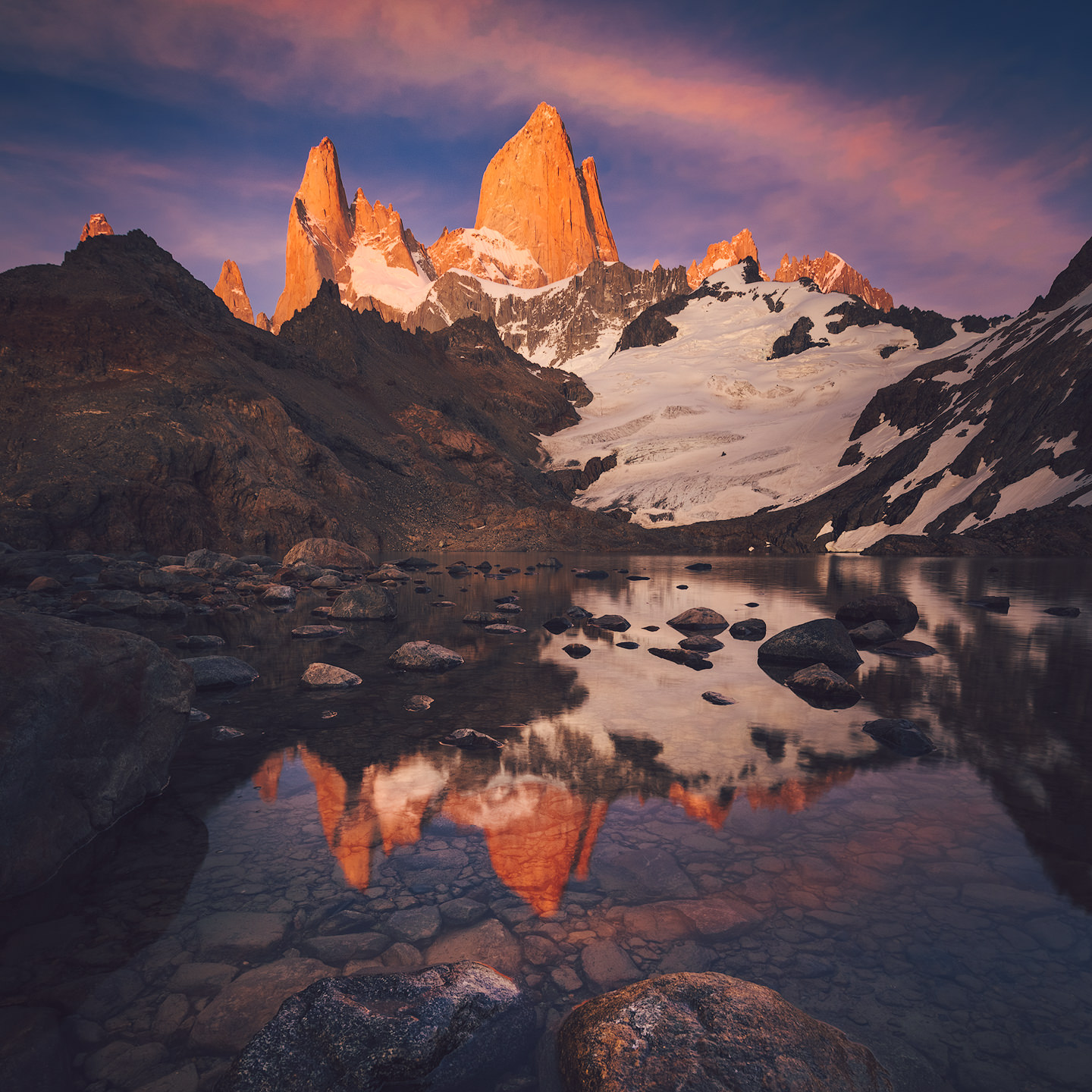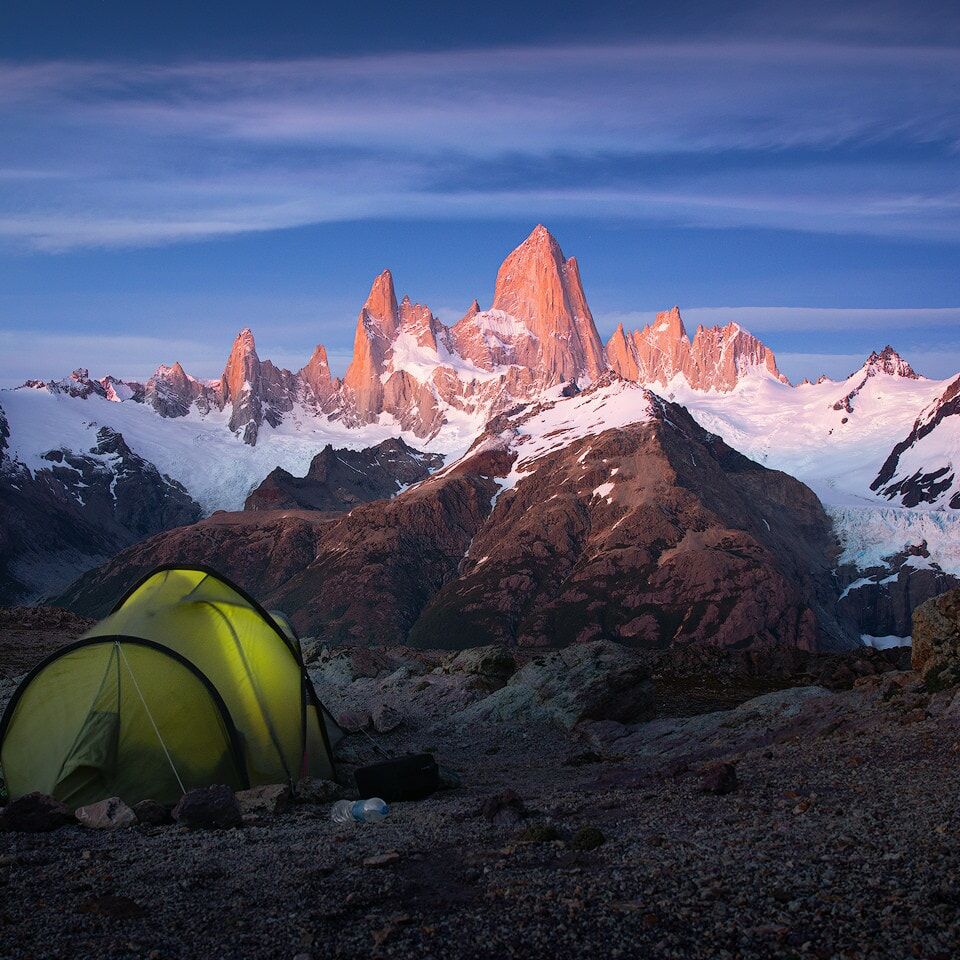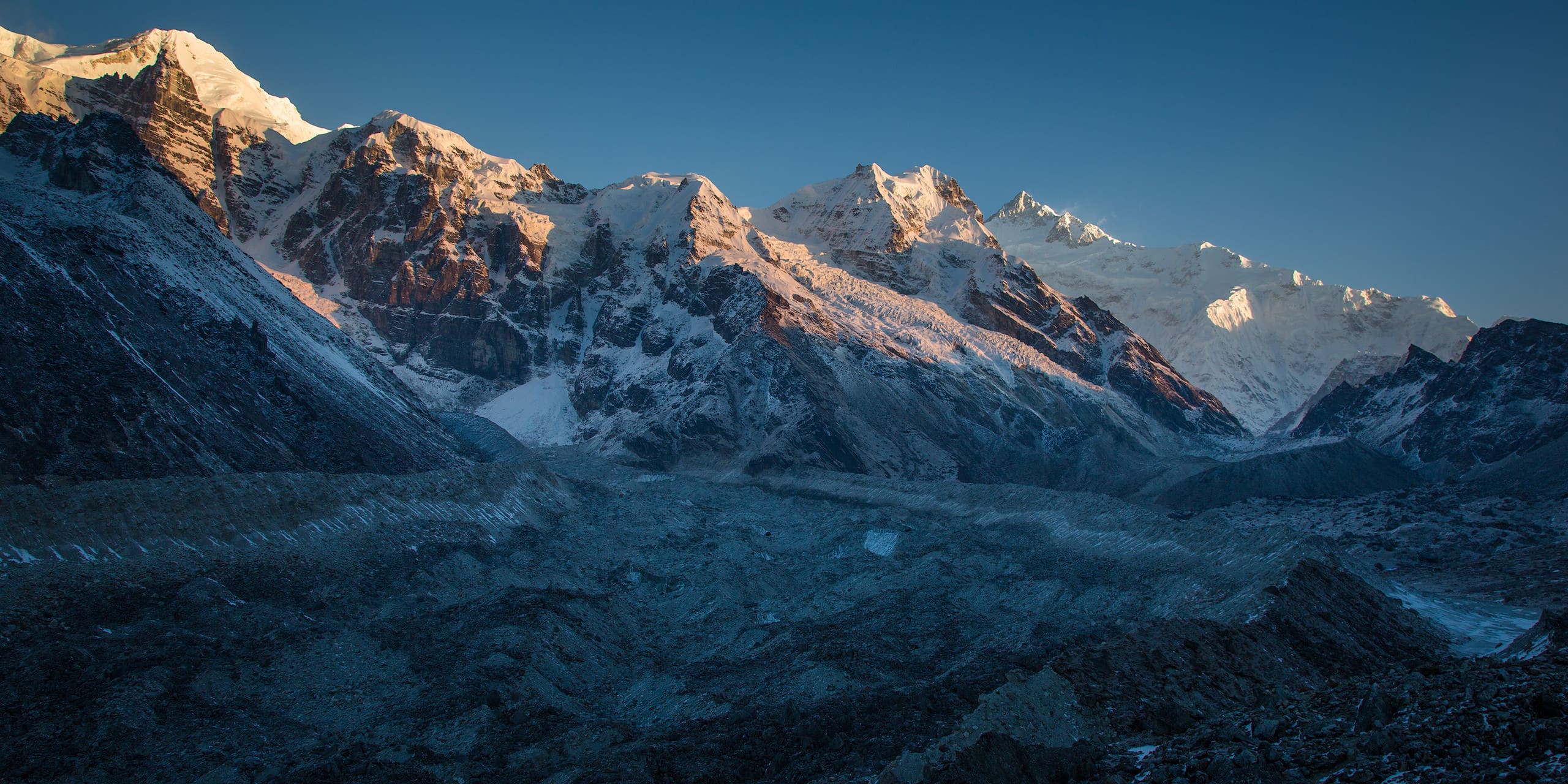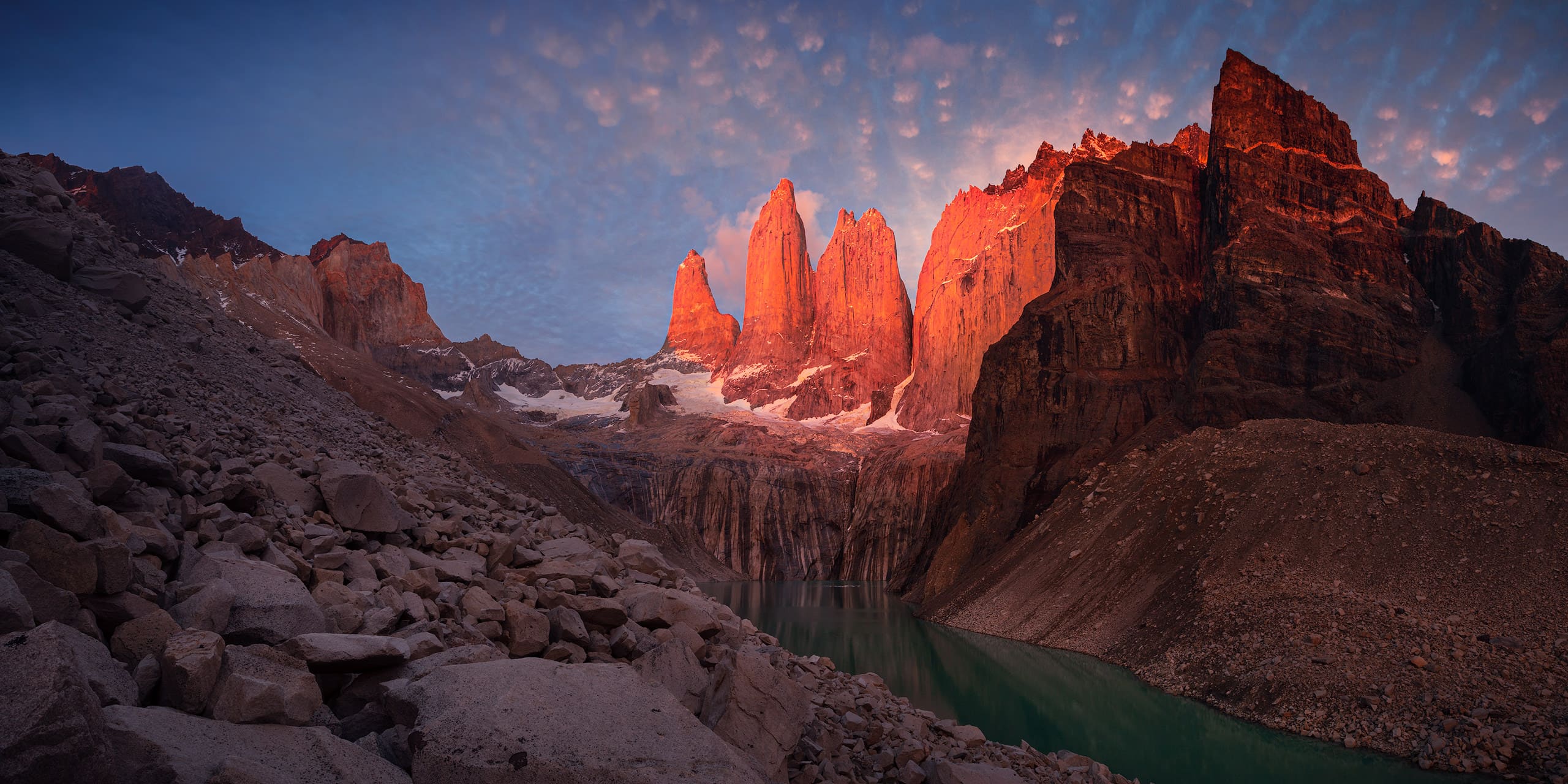Overview
Parque Nacional los Glaciares is located in the south-west of the Argentinian province of Santa Cruz. It was created in 1937 to protect the vast region dominated by glaciers and the surrounding landscape of mountains, alpine lakes, native sub-Antarctic forest, and arid Patagonian steppe. The name Los Glaciares derives from the presence of the numerous glaciers, most of them originating from the Southern Patagonian Icefield – the largest ice sheet in the Southern Hemisphere after Antarctica – which occupies almost half of the park. In 1981 the national park was declared a UNESCO World Heritage Site for being a unique natural wonder of the world.
The park’s main attraction is Glaciar Perito Moreno, an immense glacier that owes its fame to its continuous movement, which produces a cyclical phenomenon of advance and retreat – sometimes creating a natural dam that leads to a rise of the water level in the southern part of Lago Argentino. Right opposite of the glacier a huge visitor’s platform welcomes thousands of tourists each day, coming to witness the spectacular calving of Glaciar Perito Moreno’s ice front.
But Parque Nacional los Glaciares offers more than just this Disneyland-style attraction. Further north in the park the little town of El Chaltén – the self-proclaimed national capital of trekking – welcomes visitors from all over the world. There, climbers and hikers attracted by Cerro Torre and Fitz Roy, two of the most iconic peaks of Patagonia, can explore Parque Nacional Los Glaciares by foot. The numerous hiking trails take them deep into the park, where rustic campsites provide shelter from the notorious winds.


Parque Nacional Los Glaciares
Quick Info
In this section you’ll find a quick overview of the most important facts about Parque Nacional Los Glaciares together with a map and a few links. Scroll down for the travel guide to find out where to go and what to do! Even further down you’ll find sections covering trekking and landscape photography and an exclusive image gallery.
Facts
- Type: National Park
- Year of Creation: 1937
- Area: 731.932ha
Location
- Country: Argentina
- Province: Provincia de Santa Cruz
- Nearest Airport: El Calafate (FTE)
Parque Nacional Los Glaciares
On the Map
- GPS: 50°19'49.6776'' S / 73°14'0.9924'' W
- Lat/Long: -50.330466, -73.233609
Additional Information:
Travel Guide
Parque Nacional los Glaciares is a destination for outdoor lovers. Wherever you go, you’ll be surrounded by natural beauty. Whether it’s turquoise lakes, huge bodies of ice, or mountains shaped in ways one might think would only be possible in fantasy novels. What’s even more amazing about Parque Nacional los Glaciares, is that the natural beauty of the Patagonian Cordillera can be accessed in many different ways and with little efforts.
Most visitors of Parque Nacional los Glaciares arrive through either one or both of its main entry points: El Calafate or El Chaltén. The former could be classified as a classic travel hub with an international airport where tourists can find everything they need – plus they find themselves within a two-hour drive to Glaciar Perito Moreno, the famous glacier. The latter, El Chaltén, serves a different crowd. It lies within the borders of the national park and offers spectacular views and trekking – to those who dare.
Top Sights
Looking for ideas and things to do in Parque Nacional Los Glaciares? Here’s a selection of top sights which you definitely shouldn’t miss during your visit.

Cerro Torre
Cerro Torre is a spectacular mountain in southern Patagonia. It is famous amongst climbers for its impressive east face, topped with a mushroom of ice. Its climbing history is full of doubt and disputes, ranging from…
Of course the main attraction of Parque Nacional los Glaciares are its glaciers. Apart from the almost inevitable visit of Glaciar Perito Moreno, there’s a few more – and almost equally impressive – glaciers flowing down from the Southern Patagonian Icefield, which can be accessed through various excursions from El Calafate or El Chaltén. Glaciar Upsala, although not as popular as Perito Moreno, is definitely worth a visit. It is located on the northern arm of Lago Argentino and is almost fifty kilometres long. In the surroundings of Glaciar Upsala the lake is filled with immense icebergs of a deep blue colour that, depending on the time of the year, prevent a visit of the front of the glacier by boat. Tours are offered from El Calafate. Those who love adventure tourism and the ultimate glacier experience, even have the chance to kayak among the icebergs of Glaciar Upsala. Glacier-trekking tours, taking you even closer to the ice, are offered on Glaciar Perito Moreno and Glaciar Viedma. Tours to Glaciar Viedma leave from a small dock on the north-western shore of Lago Viedma near El Chaltén and can be booked at most tour agencies.
Amidst the glaciers of the Southern Patagonian Icefield the rocky peaks of the Patagonian Andes are another tourist magnet. Trekking around those mountains is an amazing experience that you definitely shouldn’t miss out on. Don’t be afraid – even unexperienced hikers will be able to access some of the easier hiking trails in the park and thus get close to the impressive walls of the mountains. Depending on how much time you are willing to spend in Parque Nacional los Glaciares, you’ll be either going on day trips or longer, multi-day treks around the spectacular mountains.
El Calafate
For the majority of tourists El Calafate, located around 70km east of the southern part of Parque Nacional los Glaciares, acts as the base for their trips into the national park. Once not more than a staging post between the area’s estancias and the province’s capital Río Gallegos, the town has been built into a veritable traveller’s base, offering restaurants, hotels, souvenir shops, and even a casino. It comes as no surprise that El Calafate has become one of Argentina’s most-visited tourist destinations. Prices in El Calafate are high, and the town overlooking Lago Argentino has a somewhat urban feel to it. Still it is clearly not a destination for a city trip and apart from souvenir shopping, eating and planning your visits of Parque Nacional los Glaciares, there’s not much to do in the town itself.
What to do in El Calafate?
Glaciar Perito Moreno
A stay in El Calafate wouldn’t be complete without a visit of the Perito Moreno glacier. The day trip to the visitor’s center on the Magellan Peninsula ranks #1 amongst all attractions of El Calafate. The glacier’s massive walls can be seen from a multi-leveled visitor’s platform from where you can atch huge chunks of ice break off of the blue wall and crash into the waters of Lago Argentino. Glaciar Perito Moreno can be visited with a tour (book in your accomodation or in one of the many tour operator’s offices) or individually. Be prepared for bad weather and bring wind- and rainproof clothing.
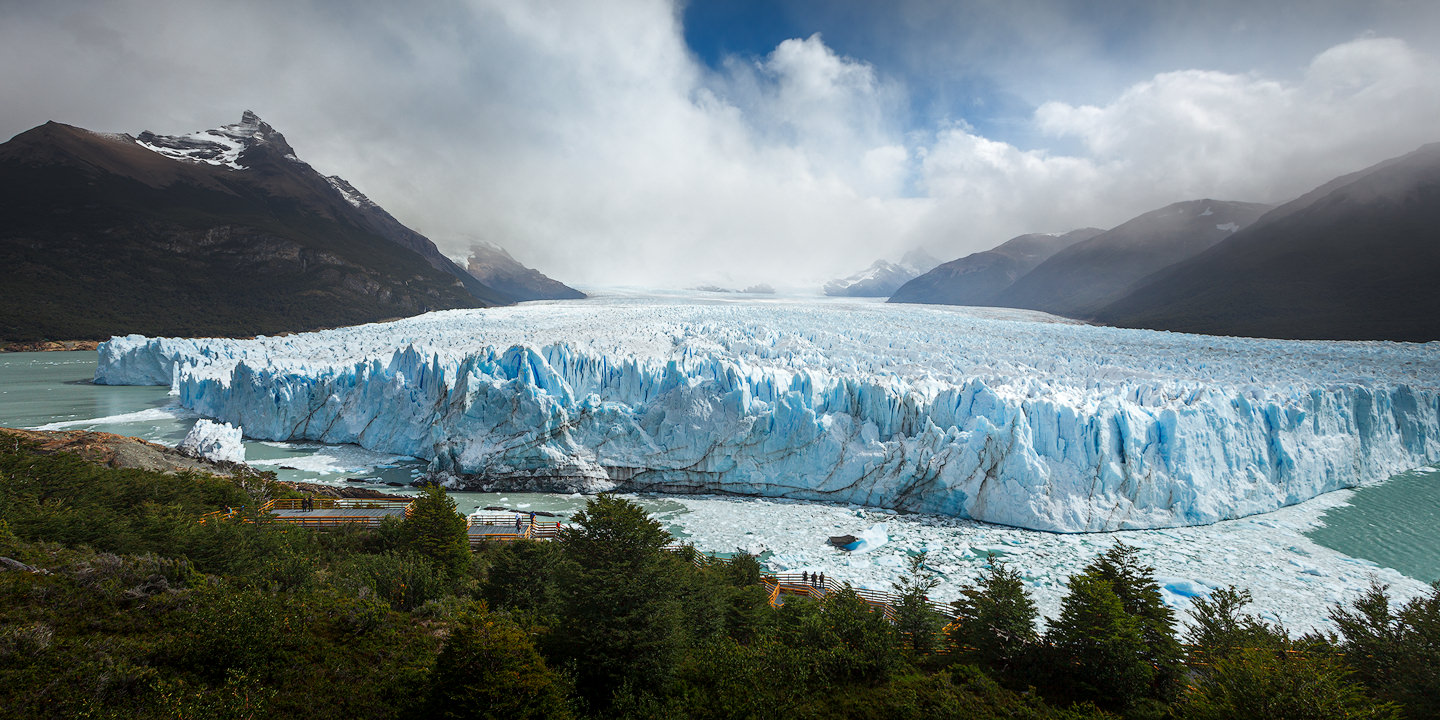
Laguna Nimez Nature Reserve
A bit north of the city center you can find the Laguna Nimez Nature Reserve, which is home to an abundance of bird species. Birdwatchers can stroll around the lagoon via wooden walkways and watch flamingos and other local and migratory birds visiting, and nesting in, the bird sanctuary. At a little less than 1km, it is within 15min walking distance from the main street.
Glaciarium
For those who’ve had enough of the Patagonian climate, the Glaciarium is an option to learn more about the glaciers of the area, without being subject to wind and weather. The modern interpretation center focused on ice and glaciers offers a rich museum experience – videos, 3D models and interactive learning included. It is located just outside of El Calafate.
Where to stay in El Calafate?
El Calafate offers all kinds of accommodations and although being generally a bit pricey – like the rest of Patagonia – you should be able to find something matching your budget. There are low budget hostels offering dorms, but also state of the art design hotels with great views of Lago Argentino – I’m sure your preferred online booking portal will provide plenty of options.
The small centre of El Calafate (alongside Avenida del Libertador) is compact and is also where most of the hotels, shops, restaurants and tour operators are located. Since everything is in walking distance, staying in hotels around the city centre is a logical choice for many visitors. That said, in high season the centre can get crowded, so travelers looking for a quieter place might be better off a little away from the hustle and bustle.
More unique and luxurious accommodation can generally be found the more you move away from the city’s center. There are a few design hotels in the outskirts of El Calafate, but for an authentic Patagonian stay you might even want to go as far as into the national park. Estancias, essentially farms turned into touristic complexes, like Estancia Christina or Estancia Helsingfors are located inside Parque Nacional los Glaciares or at its borders. They usually offer high-class accommodation and food, and an up-close-and-personal experience of Patagonia’s landscapes, flora and fauna.
How to get to El Calafate?
Getting to El Calafate is fairly easy. Although it is located in seemingly remote Patagonia, it is a major tourist destination and you have plenty of options of getting there. El Calafate is well connected with most other popular destinations in Argentina and southern Patagonia. So, wherever you are and how you are travelling, you should be able to find a straight-forward way to get there.
Getting to El Calafate
Find out how to get to El Calafate – whether travelling by bus, car or plane, you’ll be surprised how easy it is to get there.
As many other South American destinations, El Calafate can be reached by convenient local and international bus services. Buses from Río Gallegos to El Calafate take around 4 hours and go three times a day. Traveller’s coming from Chile can take a Bus in Puerto Natales – around 4 hours. Even from further north you can catch a bus, which should get you to El Calafate – the overnight trip from Bariloche takes around 26 hours, and from Los Antiguos you’ll reach El Calafate within 13 hours. Those of you who speak Spanish can check out this page with a basic bus schedule.
El Calafate can be reached from the north via the Ruta Nacional 40 (the famous Ruta 40). Coming from the east either Ruta Provincial 9 (from Puerto Santa Cruz) or RP 5 (from Río Gallegos) take you there. If you arrive from Chile you can cross the border either from Puerto Natales to Río Turbio or further north from Parque Nacional Torres del Paine via Paso Río Don Guillermo (a rough gravel road but a definite shortcut combining two major Patagonian tourist attractions).
Flying into El Calafate is the quickest way of getting to Parque Nacional los Glaciares. Multiple flights from most major Argentinian cities arrive daily at the international airport of El Calafate. A flight from Buenos Aires takes little more than three hours.
For local transport in and around El Calafate you have the usual options. Regular buses serve Glaciar Perito Moreno. If you don’t mind paying a considerable extra, there’s also private taxis (called remises in Argentina) and mini-van services (most accommodations offer them or at least can hook you up) offering more flexibility. In general though, everything you might need as a tourist (except Glaciar Perito Moreno and the airport) is within walking distance. For those having their own transport, El Calafate offers fuel and, in case you may need it, spare parts and mechanics. You can also find a few car rental agencies in El Calafate – be warned though, renting a car in Patagonia might cost you a kidney.
El Chaltén
El Chaltén is a young and evergrowing town located at the heart of Parque Nacional los Glaciares, and offers an enormous amount of activities in a pristine and protected natural environment. There are numerous trekking options with varying degrees of difficulty and dozens of highly demanding, technical climbing routes. Now if that wasn’t already enough to justify a visit, the little town also awaits hungry explorers returning from the mountains – or well, just recently getting off the bus – with dozens of little bars and restaurants and a super laid back atmosphere. Unlike El Calafate, El Chaltén gives you the real deal Patagonian feeling, but still has all the creature comforts and a whole lot of charm. I’d definitely recommend spending a few days there.
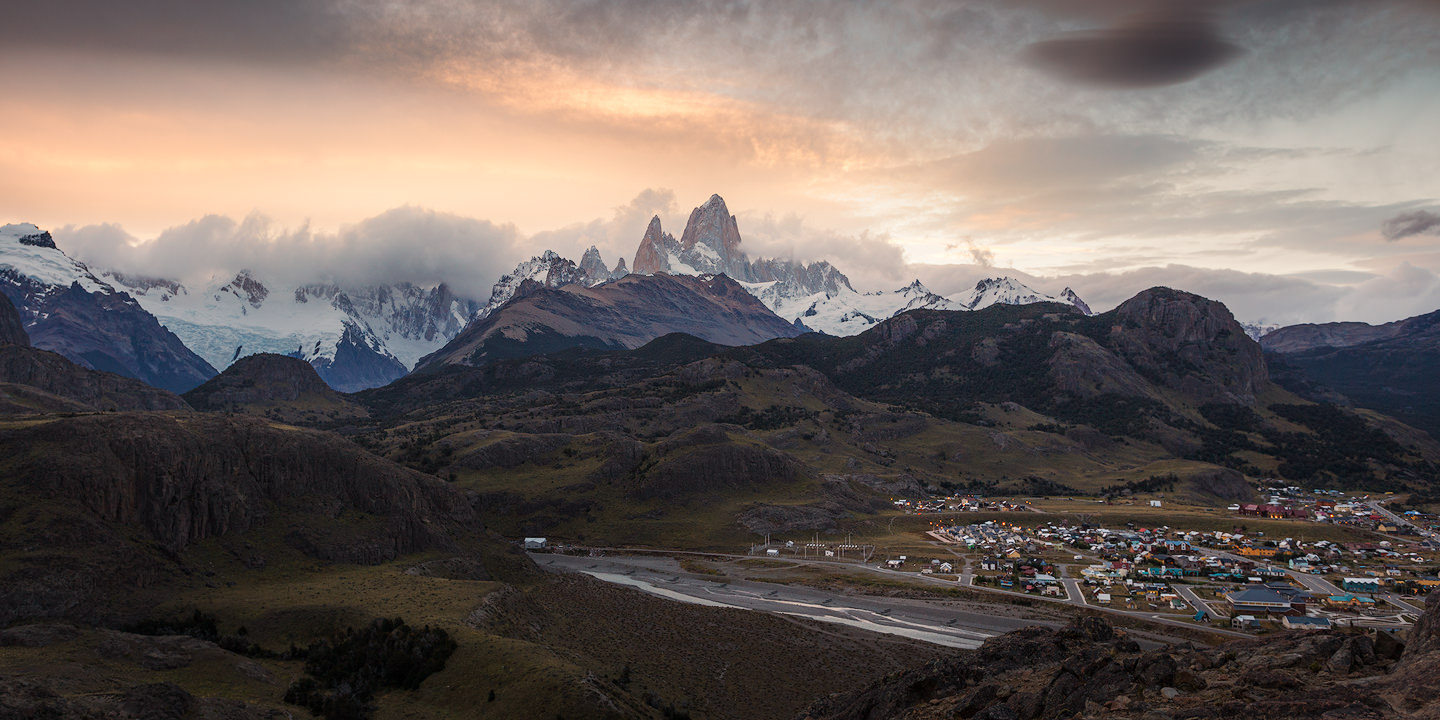
The name “El Chaltén” is derived from the name of Fitz Roy among the indigenous Tehuelche. In the language of the indigenous people, the mountain is called El Chaltén, which means “Smoking Mountain”, a reference to the clouds often visible at the top of the mountain. The town was founded in 1985 to strategically promote settlement near the disputed border areas between Chile and Argentina and has grown to its current size thanks to adventure- and climbing-tourism. Luckily its remoteness and its location inside the national park has protected it from overexploration and kept the hippie-spirit of the first people who moved there alive. Imagine that until recent years the town neither had cell phone service, nor high speed internet.
What to do in El Chaltén?
Climbing & Hiking
El Chaltén has an almost infinite amount of outstanding hiking trails with unsurpassed views of the Patagonian mountains, lakes, and glaciers. The options range from easy day hikes with durations starting at less than 45 minutes, all the way to extended multi-day backpacking trips and technical climbs. It is safe to say that the area offers some of the best hiking opportunities on our planet, and it comes as no surprise that the town of El Chaltén carries the official title „Capital Nacional del Trekking“.
Eating & Drinking
What do you need after a few days out in the wild Patagonian mountains? Yes, food and drinks. Luckily El Chaltén offers plenty. No matter whether you’re into vegetarian food or crave for a feast of Argentinian steak – the restaurants of El Chaltén have got you covered. Add a few breweries and bars and a small wineshop with a great selection of local wines and you might find yourself not wanting to leave anymore. Going with the flow is highly recommended.
Where to stay in El Chaltén?
The main factor for El Chaltén’s rapid growth has been tourism, and so it doesn’t come as a surprise that in every second building you can find some business related to tourism. Hotels and hospedajes are scatterd all over the little town. Given the small size of El Chaltén, the location of accomodations is not really a deciding factor. Restaurants and bars cluster around Avenidas San Martín and Güemes and so do many Hostels. Hostels have been the most common accomodations until higher class hotels have been built in recent years. Don’t ask for too much though, this still is Patagonia. El Chaltén is expensive and fills up in summer. Don’t expect to easily find accomodation when you arrive on the evening bus without any reservation. Once again, let the booking portal of your choice do the work in advance.
How to get to El Chaltén?
In patagonian terms of distances, El Chaltén and El Calafate are quite close to each other – looking a bit closer though, you’ll notice that there’s still more than 200km of road between the two towns. That means that even if you’ve already made it to El Calafate you still have another three hours to go. Roads are good though and traffic is non-existent. If you approach from the north (Los Antiguos or Bariloche) you’re not as lucky: Ruta 40 is seemingly infinite and despite ambitious road works in recent years, you might still find sections of gravel road.
Getting to El Chaltén
Find out how to get to El Chaltén – getting there by car is pretty much straight forward. Turn off from Ruta 40 and follow RP23 all the way west until you reach El Chaltén. When travelling by bus it depends on the direction you’re coming from, but you’ll definitely find a way to get there. Here’s a few options:
There’s a few daily buses that take you from El Calafate to El Chaltén. They are the cheapest option to reach El Chaltén. Most of them stop at the airport as well and the trip takes around three hours give and take (including a stop at Estancia La Leona for snacks and other traveller’s needs). At a slightly higher price you can hop on a mini-van, offering better schedules. The ride takes almost equally long, though.
Regular bus service is available from Los Antiguos to El Chaltén (10 hours). Basically, you keep going south on the RN 40 until you reach RP 23, which takes you straight to El Chaltén. Keep an eye on the horizon for views of the spectacular mountains of Parque Nacional Los Glaciares.
You can also access El Chaltén by foot coming from Chile. First you’d have to cross Lago O’Higgins by boat, arriving in Candelario Mancilla. There, the Chilean border formalities have to be done before continuing south. After crossing the border you register on the Argentinian side at the Gendarmería Nacional at the north shore of Lago del Desierto. From there boat services take you across the beautiful Lago del Desierto (check schedule in advance!) to the south port of the lake, where you find camping and accommodation. Eventually you keep heading south until you reach El Chaltén.
Whatever means of transport you choose to get to El Chaltén, make sure to watch the horizon once you’ve turned off from Ruta 40. If you’re lucky enough to have good weather you should be able to enjoy the sight of Cerro Torre and Fitz Roy during the 80km ride. After more than 10 years and many visits, I still get emotional whenever approaching El Chaltén and its amazing panorama.
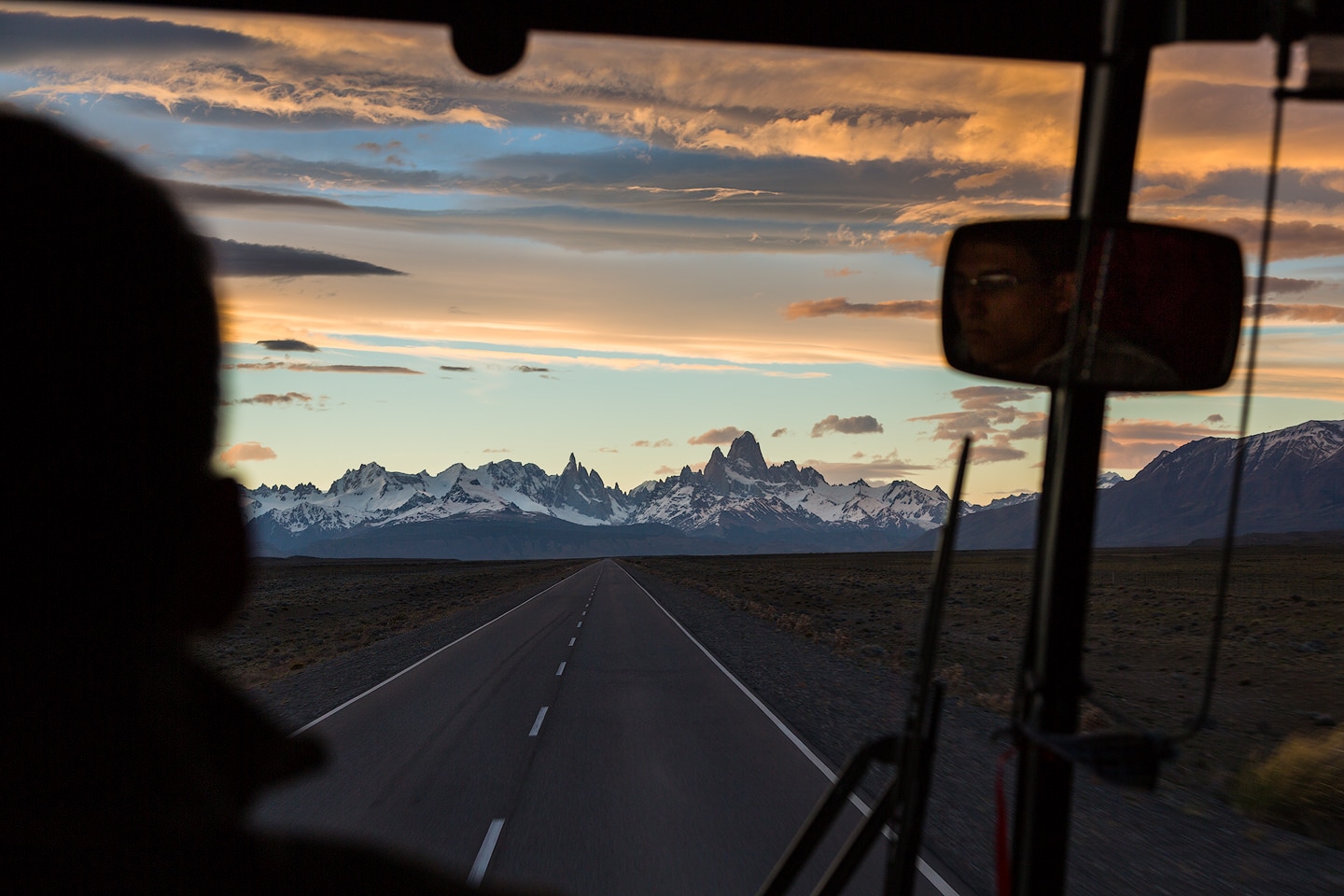
Once you reach El Chaltén you are inside Parque Nacional los Glaciares and most likely will continue by foot. Most ventures into the park start right at the outskirts of town and thus there’s almost no need for transport – all shops and restaurants are within walking distance. You can find a few travel agencies or taxis (remember: they are called remises) offering shuttle services for certain trail-ends in case you might need one.
Other Access Points
There are a few more gateways into Parque Nacional Los Glaciares. Some of them are a bit harder to reach and getting into the park might involve off-the-beaten-path-travelling or serious expeditioning (and sometimes both). The reward often is a stay in unspoilt Patagonian nature – vast, incredibly beautiful, and sometimes windy and hostile. Always check with the national park’s office whether a permit is needed. Having your own transport comes in handy.
Puerto de Punta Bandera
Located approximately 47km west of El Calafate, Puerto de Punta Bandera can be accessed by RP 11 and RP 8. From this small port different lake excursions depart, either full day or overnight, crossing Lago Argentino and getting you up close to the most important glaciers (like Glaciar Perito Moreno or Glaciar Upsala) in the southern part of the park. Tours should be booked in advance in El Calafate and include the transfer to the port for those who do not have their own vehicle.
Lago Roca
Located 50km south-west of El Calafate, Lago Roca can be accessed via RP 11 towards the Perito Moreno glacier, turning off to the left onto RP 60 (gravel road) until it connects with the RP 15, or always driving along the RP 15 (all gravel road), which allows you to see typical Patagonian estancias and to get a glimpse of what the life of the Gauchos might be like. Lago Roca can be reached by private vehicle, rental car, remis, guided excursion and during the summer there are regular bus lines leaving from the bus terminal.
Zona Central
The Zona Central (central zone) of Parque Nacional los Glaciares is the most protected area of the national park. It is difficult to access, remote and lacks communication, so in case of any accident or eventuality there is a long response time for the emergency services. Permits, issued by the park’s main office in El Calafate, are needed to enter Zona Central. But don’t expect to just go and ask for a permit – these permits are only given out to experienced parties (with minimum of 3 persons) after a thorough check of their intentions. Only recommended during summer season.
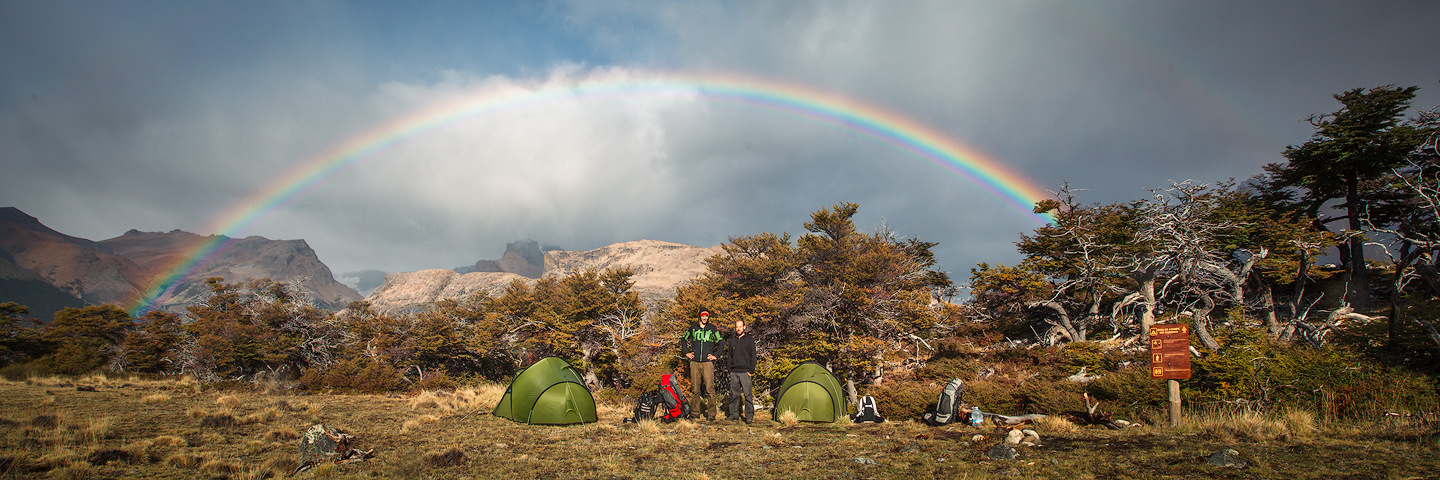
- Seccional Guanaco - Halfway between Lago Argentino and Lago Viedma. Can be reached from El Calafate via RP 11, RN 40 and RP 69 (rough gravel road) – total distance 154km. You’ll find a small ranger’s hut and a basic camping area. If planning a visit, check with the national park’s office and take into account the time it takes to get there from El Calafate or El Chaltén (2.5-3 hours). Road conditions of RP 69 can be very poor.
- Seccional Moyano - On the southeast shore of Lago Viedma. Accessible via RP 21 (gravel road) – distance from El Calafate 180km. If planning a visit, check with the national park’s office and take into account the time it takes to get there from El Calafate or El Chaltén (2.5-3 hours). Unserviced campsites available. Nearby Estancia Helsingfors offers accomodation and food.
Trekking
Trekking in Parque Nacional los Glaciares is a fascinating experience that quite easily takes you to the foot of peaks like Fitz Roy and Cerro Torre. While in other parts of the world you’d need to be a serious alpinist to get so close to most spectacular mountains, here even first-time hikers can get their share of an adventure. El Chaltén lies at a low altitude, and you seldomly go higher than 1.000m. There isn’t even the need to spend the night in the wild – some of the best treks (like Laguna de los Tres or Laguna Torre) can also be done as day trips. Most of the hikes are exhausting, but – believe me – all of them are worth the pain.
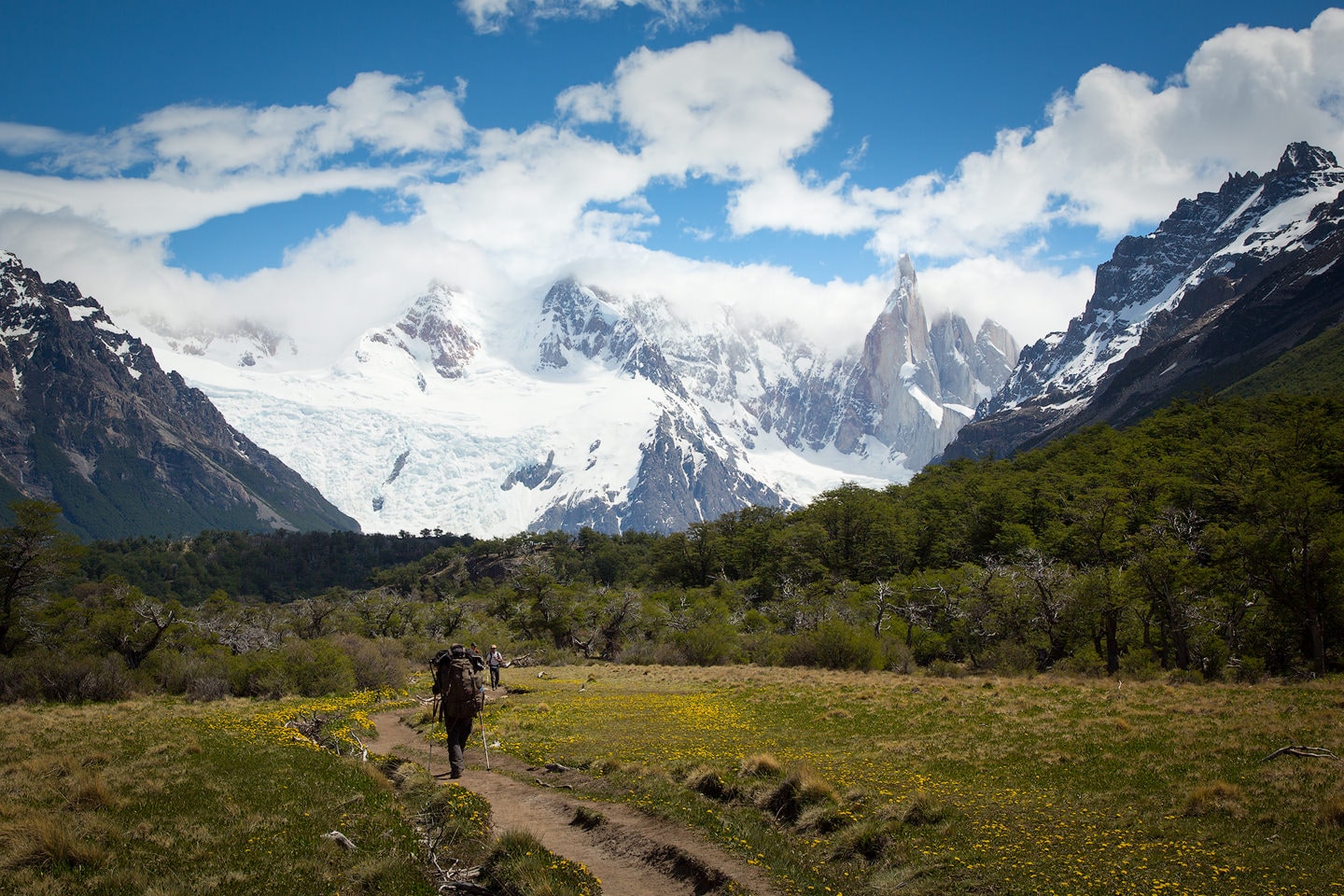
Not only will hiking get you up close and personal with the iconic peaks, it will also take you on a tour through most Patagonian ecosystems. Trails in the lower areas in the east of the park are surrounded by Patagonian Grassland, a desert-like landscape with grasses and scattered shrubs. The further west and higher you go, the more you’ll be walking through Magellanic subpolar forests, dominated by southern beeches like the typical Lenga and Ñirre trees. Above the treeline you’ll encounter alpine surroundings where vegetation becomes scarce. The southern Patagonian Icefield in the far west of the park is the most extreme region, ressembling an antarctic environment that consist of nothing more than ice and a few rocky peaks.
There’s many things to marvel at and it is recommended to keep your eyes open during your hikes in Parque Nacional los Glaciares, as you might come across some of Patagonia’s wildlife. It is almost impossible to hike through the park without seeing some of the most common bird species like the Southern Caracara, the Austral parakeet, the Magellanic woodpecker or even an Andean condor. The most common mammals – apart from mice in the camps – are the Andean Grey Fox, skunks, the elusive Puma and the emblematic and endangered Andean deer called Huemul (you might hear their screams during rut in autumn).
Popular Hikes
While trekking in Parque Nacional los Glaciares can literally be done anywhere in the park (given the right preparations), El Chaltén offers the greatest variety of marked trails and easiest access to some of the most spectacular peaks like Fitz Roy and Cerro Torre. We’ll therefore focus on hiking in El Chaltén – if you want to dive deeper into the national park I’d recommend a visit of the park’s information offices.
Laguna Capri
When visiting El Chaltén, a hike to Laguna Capri is a must – either as a standalone trip or passing by on the way to Laguna de los Tres. Laguna Capri attracts with the blue colour of its waters, the native trees that accompany the trail, and the panoramic views of Fitz Roy. The trail starts at the western end of Avenida San Martín.
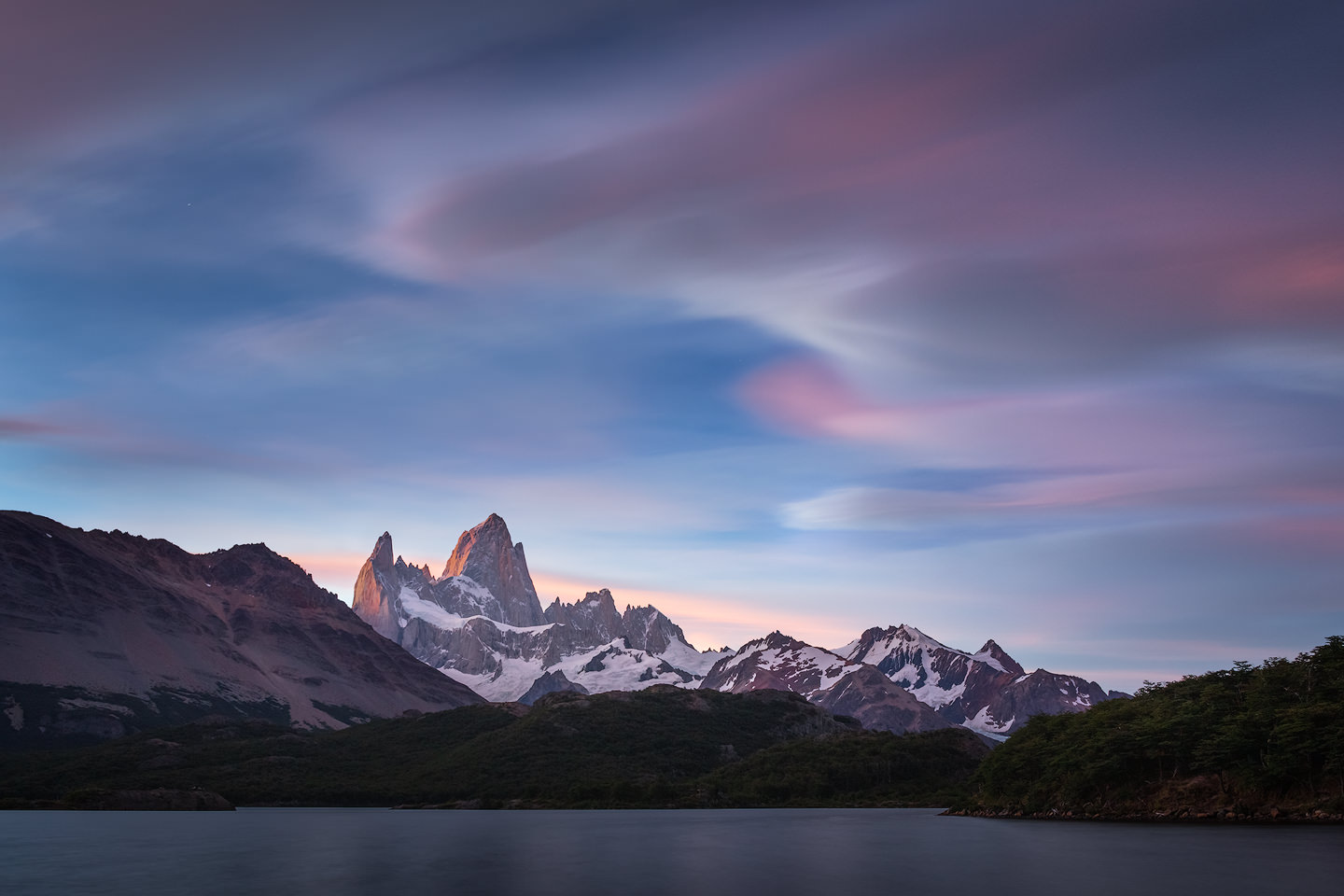
- Distance: 9km (round trip)
- Duration: 2-3 hours (round trip)
- Max. elevation: 783m
- Level: easy
- Permit: not required
Laguna de los Tres
Laguna de Los Tres is one of the most iconic hikes in Patagonia and the most popular trek around El Chaltén. The trail takes you to the classic viewpoint of Fitz Roy and the small lake below. Continue from Laguna Capri until you reach Campamento Poincenot (if you bring a tent you can spend the night there). Cross the bridge and keep going – the trail becomes steeper and eventually takes you to Laguna de los Tres. The view is priceless.
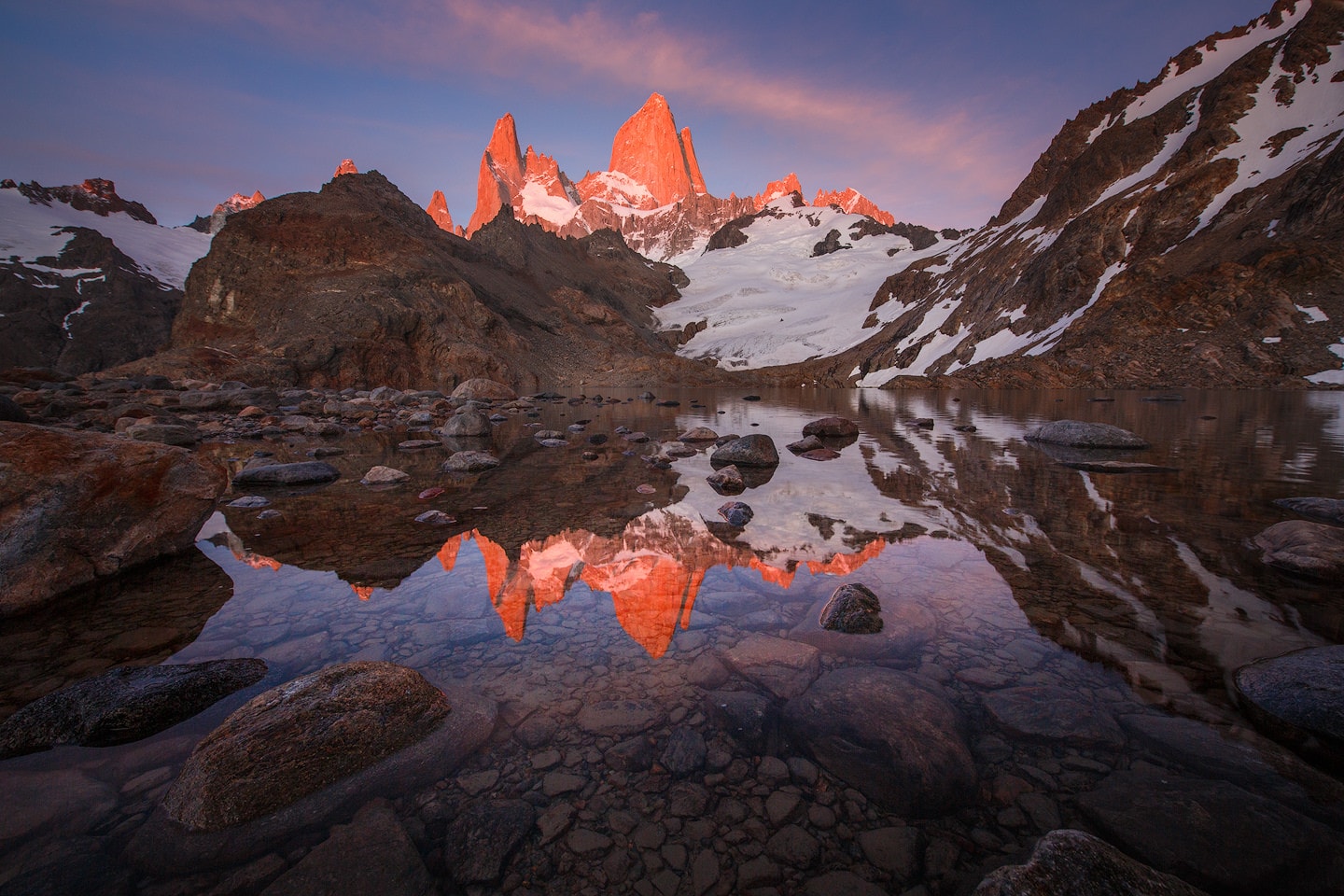
- Distance: 22km (round trip)
- Duration: 6-8 hours (round trip)
- Max. elevation: 1198m
- Level: intermediate
- Permit: not required
Laguna Torre
The trek to Laguna Torre is a another great classic you should not miss. The trail takes you to a big lake at the foot of Cerro Torre. Trailhead is in the upper parts of El Chaltén (accessible via the huge metal stairs). Can be hiked as a combined 3-day trek together with Laguna de los Tres. Campsite available at Campamento D’Agostini.

- Distance: 19km (round trip)
- Duration: 5-7 hours (round trip)
- Max. elevation: 669m
- Level: intermediate
- Permit: not required
La Vuelta al Huemul
The Huemul Circuit is the most popular of the more advanced treks in El Chaltén. It is a tough 4-day trek that takes you over Paso del Viento where you can enjoy amazing views of the Southern Patagonian Icefield. Experience, navigational skills and permit required.
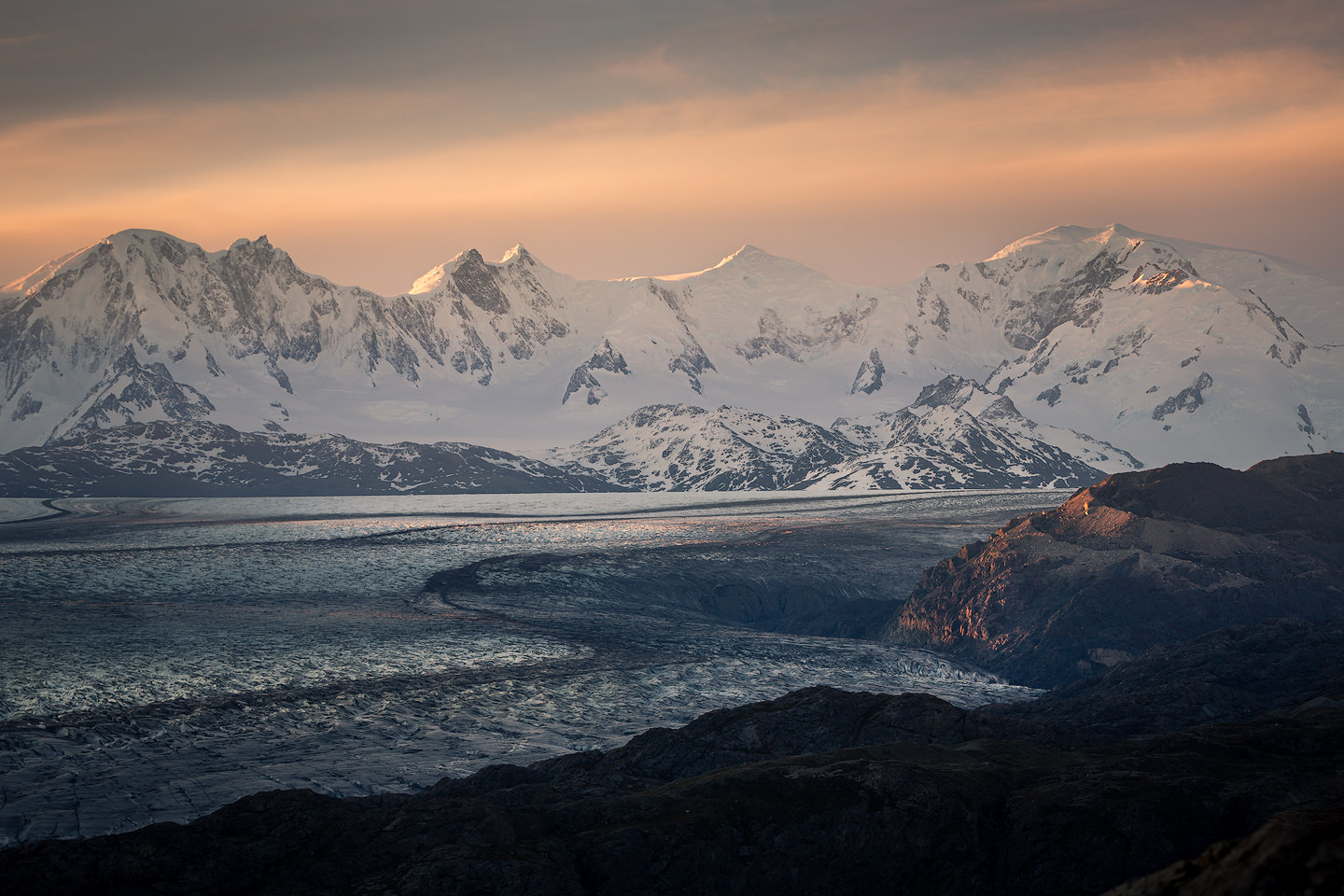
- Distance: 103km (round trip)
- Duration: 4 days (round trip)
- Max. elevation: 1692m
- Level: advanced
- Permit: required
Advice for Hikers
Weather & Climate
Before going on a hike in this part of the world, you should know a few things about weather in Patagonia. First of all: Patagonia can give you basically three seasons in one day, this means: sun, rain and snow. Weather is very unpredictable and can change quickly. Plus: don’t be surprised if you find yourself battling 100+ km/h winds. It’s best to check a reliable weather forecast (locals rely on Windguru, which also worked well for me in the past), to get a rough idea what to expect. But in any case: be prepared for everything.
The summer season in Parque Nacional los Glaciares lasts roughly from November to March and offers the warmest temperatures. On sunny days with little wind you might be on the trail in a t-shirt and shorts. Nights can get frosty in shoulder season (October, April), but the notorious wind should be less of a nuisance. Winter is generally humid, cold and quiet with low lying clouds and occasional snowfall. Snow cover in the lower areas usually doesn’t last long.
Trails & Safety
As long as you stick to the popular trails you can expect well marked trails and comfortable hiking. It’s almost impossible to get lost, wooden bridges facilitate the crossing of streams and bogs, and camps were established in safe zones with easy access to water. Water is available throughout most of the hikes and of excellent quality. That said, summer can get crowded – take smart decisions about where to get your water from, especially around campsites.
Whenever straying away from the main trails though, you’ll get to know the wilder side of Parque Nacional los Glaciares. You’ll find yourself in a pristine but remote alpine environment with all its beauty and dangers. Expect river crossings, rock fall, strong winds and quickly changing weather – all of which have led to deaths in the past. The park authorities try their best to prevent injuries, but the increasing popularity of hiking in Patagonia attracts more and more keen hikers, some of which come equipped with little or no knowledge and preparation. Stick to the rules, acknowledge red tape, and as always it’s highly recommended to be aware of your own skills and the environment you move in.
Keep in mind that the park is the natural habitat of the Puma. Luckily sightings or attacks are rare, as the South American Puma is shier than its North American relative, the Cougar (well, actually the Puma is just lucky enough to find sufficient prey further away from humans). Still, it is recommended not to walk alone, and never leave children unattended. In case of an encounter with a Puma, do not panic or run. Try to appear bigger and taller – rise your arms up, maybe hold up your walking sticks. Don’t crouch or bend over. Move away slowly, always facing the Puma – don’t turn away.
Camping
With the execption of a few paid camps on private land, camping in Parque Nacional los Glaciares is free. This of course means that unless you go on a paid tour where somebody might carry and set up your tent for you, you will have to bring your own equipment. The camps are usually well sheltered from the wind and rain, and offer the most basic services (expect pit toilets). The most popular campsites are Campamento Poincenot (below Laguna de los Tres), Campamento D’Agostini (close to Laguna Torre), and Campamento Laguna Capri (right next to Laguna Capri). Keep in mind that summer can get crowded on the trails and some of the camps might even fill up.
Supplies & Equipment
You can buy food and supplies in supermarkets in El Calafate or El Chaltén. El Calafate has big supermarkets with a huge selection of products, in El Chaltén you’ll find 3-4 smaller supermarkets with a limited selection. The basics are available in any supermarket – if you’re looking for something in particular you might have to visit on or two of them. Sometimes if might pay off to have a look at some of the smaller kiosks – the often have chocolate products you won’t find in the supermarkets. Dry-frozen meals are hard to find.
Equipment is available for rent at most stores selling mountain equipment. Quality is generally mediocre, but most tents, crampons, etc.. still get the job done. Bear in mind that renting equipment is expensive. For technical climbs it is definitely recommended to bring your own equipment. Gas for stoves can also be found at most outfitters. Topographic maps can be found at every corner.
Fees & Permits
At the time of writing, access to Parque Nacional Los Glaciares is free – with the big exception of visiting Glaciar Perito Moreno. Apart from being paid, the access to Glaciar Perito Moreno is restricted to the opening hours of the visitor’s center. The entry fee will either be collected at the gate or is part of your tour package. Prices may vary from season to season – the latest tariffs can be found here.
You can move around more or less freely in the northern section of Parque Nacional los Glaciares (and around El Chaltén) as long as you stick to marked trails and established campsites (you should be given a map when entering the park). If you do plan any remote trips or climbing you will have to register and get your permit from the national park’s office either in El Calafate or El Chaltén. Non-commercial permits are generally free.
Landscape Photography
Great landscape photography locations are scattered everywhere in the park – the granite walls of Cerro Torre and Fitz Roy (plus the nearby lakes), streams and waterfalls, and of course the glaciers offer a range of compositions only limited by your imagination. Add to that the ever changing weather and incredible cloud formations (lenticular clouds are quite common), and you have the explanation why Parque Nacional los Glaciares is truly one of the classic landscape photography locations in the world.
There are countless opportunities to photograph the amazing views, both throughout the day, and throughout the year. However, given that the area is such a photographer’s Mecca, it takes a significant amount of creativity and ingenuity to capture something truly original and astonishing. Iconic locations are good places to explore while trying to find your own vision of scenes such as the view of Fitz Roy reflected in Laguna de los Tres or the classic sunrise shot of Cerro Torre.
On the Blog
We are not done yet. If you want to read more about Parque Nacional Los Glaciares and keep exploring the blog, you’ve come to the right place. Here’s a selection of images, adventures and articles tagged with Parque Nacional Los Glaciares for you:
When autumn arrives in Patagonia sometime between late March and early April, a transition is started. Every day the sun stands lower above the horizon and the…
Usually the end of a year - or the beginning of a new one - marks the period of looking back. Unfortunately last year didn't quite turn out to be THE year to…
Many of you might have seen pictures of Patagonia's majestic mountains. Some of you might have even been there and have seen them in person. If you have ever…
Leaving bed early to go on a pre-dawn walk with unknown outcome often turns into a mental challenge for me. The uncertainty that comes with landscape…
Since I'm being treated to some decent internet connection these days I thought I'd give you a little update about my whereabouts... I'm reciding in Ushuaia at…
Merry X-Mas everyone!! I'm lucky enough to be celebrating in Patagonia this year. Here's a shot from last week. I'll post some updates next week - if internet…
Image
Image
Adventure
Image
Article
Article
